RMS
Risk Management and Safety Warns of Using Certain Dehumidifiers.
8/17/2021

Over two million dehumidifiers have been recalled due a fire and burn hazards. There have been over 100 incidents so far due to these units overheating or catching fire. So far, no injuries have been reported but the incidents have resulted in almost $17 million in property damage.
This recall involves 25-, 30-, 35-, 45-, 50-, 60-, 65-, 70-, and 74-pint dehumidifiers, manufactured before September 1, 2017, with the brand names including AeonAir, Amana, ArcticAire (Danby), Classic (Danby / Home Hardware Stores), Commercial Cool, Danby, Danby Designer, Danby Premiere, De’Longhi, Edgestar, Friedrich, Generations (Danby), Haier, Honeywell (JMATEK / AirTek), Idylis, Ivation, perfect aire, SuperClima, Whirlpool, and Whynter.
Please check the model number of your dehumidifier’s model number here: https://www.cpsc.gov/Recalls/2021/two-million-dehumidifiers-with-well-known-brand-names-recalled-due-to-fire-and-burn and confirm it is part of the recall.
Risk Management and Safety recommends you stop using the dehumidifiers immediately and contact New WideTech for a refund. Contact New Widetech toll-free at 877-251-1512 from 8 a.m. to 7 p.m. ET Monday through Friday, or online at www.recallrtr.com/nwtdehumidifier or http://www.newwidetech.com/en/ and click on “Recall Information” at the bottom of the page for more information.
Auburn Risk Management and Safety Featured on URMIA Matters Podcast
7/7/2021
The University Risk Management and Insurance Association (URMIA) recently featured Auburn University and Risk Analyst Evan Ferguson on their URMIA Matters podcast. The podcast discussed the Student Property Insurance Program (SPIP). Evan detailed how the program has helped Auburn University Risk Management and Safety better serve the University and how the program benefits Auburn student faculty and staff. You can listen here: https://urmiamatters.buzzsprout.com/687161/8757933-problem-solved-urmia-student-property-insurance-program
The SPIP program, which is available to all Auburn University students, faculty, and staff, helps to better protect and insure some of the items we use everyday while on campus.
Frequent cases of property loss include theft and accidental damage (dropping, spilling liquids, and similar events). If this were to happen, your out-of-pocket costs to repair or replace will generally run between $500 and $2,000.
Although some homeowners policies provide some coverage, they generally do not cover “breakage” or accidental damage, and usually have high deductibles that effectively leave most property losses unrecoverable. For these reasons, it is strongly encouraged to have a personal property insurance policy for their belongings while living and working on campus. You can learn more about the SPIP at Auburn here: https://cws.auburn.edu/rms/pm/rentersinsurance
FDA advises consumers not to use hand sanitizer products manufactured by Eskbiochem (FDA.gov)
8/4/2020
Update [6/29/2020] FDA is alerting consumers of Saniderm Products and UVT Inc.’s voluntary recall of Saniderm Advanced Hand Sanitizer. Following FDA’s recommendation, two distributors – Saniderm Products and UVT – agreed to recall Saniderm Advanced Hand Sanitizer packaged in 1-liter plastic bottles and labeled with “Made in Mexico” and “Produced by: Eskbiochem SA de CV.”
- The UVT hand sanitizer is labeled with lot number 0530 and an expiration date of 04/2022.
- The Saniderm Products hand sanitizer is labeled with lot number 53131626 and “Manufactured on April/1/20.”
[6/19/2020] FDA advises consumers not to use any hand sanitizer manufactured by Eskbiochem SA de CV in Mexico, due to the potential presence of methanol (wood alcohol), a substance that can be toxic when absorbed through the skin or ingested. FDA has identified the following products manufactured by Eskbiochem:
- All-Clean Hand Sanitizer (NDC: 74589-002-01)
- Esk Biochem Hand Sanitizer (NDC: 74589-007-01)
- CleanCare NoGerm Advanced Hand Sanitizer 75% Alcohol (NDC: 74589-008-04)
- Lavar 70 Gel Hand Sanitizer (NDC: 74589-006-01)
- The Good Gel Antibacterial Gel Hand Sanitizer (NDC: 74589-010-10)
- CleanCare NoGerm Advanced Hand Sanitizer 80% Alcohol (NDC: 74589-005-03)
- CleanCare NoGerm Advanced Hand Sanitizer 75% Alcohol (NDC: 74589-009-01)
- CleanCare NoGerm Advanced Hand Sanitizer 80% Alcohol (NDC: 74589-003-01)
- Saniderm Advanced Hand Sanitizer (NDC: 74589-001-01)
FDA tested samples of Lavar Gel and CleanCare No Germ. Lavar Gel contains 81 percent (v/v) methanol and no ethyl alcohol, and CleanCare No Germ contains 28 percent (v/v) methanol. Methanol is not an acceptable ingredient for hand sanitizers and should not be used due to its toxic effects.
Consumers who have been exposed to hand sanitizer containing methanol should seek immediate treatment, which is critical for potential reversal of toxic effects of methanol poisoning. Substantial methanol exposure can result in nausea, vomiting, headache, blurred vision, permanent blindness, seizures, coma, permanent damage to the nervous system or death. Although all persons using these products on their hands are at risk, young children who accidently ingest these products and adolescents and adults who drink these products as an alcohol (ethanol) substitute, are most at risk for methanol poisoning.
On June 17, 2020, FDA contacted Eskbiochem to recommend the company remove its hand sanitizer products from the market due to the risks associated with methanol poisoning. To date, the company has not taken action to remove these potentially dangerous products from the market. Therefore, FDA recommends consumers stop using these hand sanitizers and dispose of them immediately in appropriate hazardous waste containers. Do not flush or pour these products down the drain.
FDA reminds consumers to wash their hands often with soap and water for at least 20 seconds, especially after going to the bathroom; before eating; and after coughing, sneezing, or blowing one’s nose. If soap and water are not readily available, the Centers for Disease Control and Prevention (CDC) recommend consumers use an alcohol-based hand sanitizer that contains at least 60 percent ethanol.
FDA remains vigilant and will continue to take action when quality issues arise with hand sanitizers. Additionally, the agency is concerned with false and misleading claims for hand sanitizers, for example that they can provide prolonged protection such as 24-hours against viruses including COVID-19, since there is no evidence to support these claims.
To date, FDA is not aware of any reports of adverse events associated with these hand sanitizer products. FDA encourages health care professionals, consumers and patients to report adverse events or quality problems experienced with the use of hand sanitizers to FDA’s MedWatch Adverse Event Reporting program:
- Complete and submit the report online; or
- Download and complete the form, then submit it via fax at 1-800-FDA-0178.
Fire Alarm Emergency Notification Test
5/4/2020
Campus Safety & Security will be conducting testing of the fire alarm emergency notification system in 60 buildings on campus after 3:00 p.m. on Tuesday, May 5. The testing should take an hour or less.
During this time, horns will sound, strobes will flash, and a series of emergency messages will be broadcast throughout affected buildings.
If at any time during the testing you believe there is a real emergency, DIAL 911 immediately. If an actual emergency occurs, a live public address message will be broadcast to provide instructions to building occupants.
We appreciate your understanding and apologize for any inconvenience. If you have any questions, please email campussafety@auburn.edu.
Risk Management and Safety warns against use of Methylene Chloride Paint Remover
12/5/2019
On November 22, 2019, the Environmental Protection Agency (EPA) issued regulations on the consumer use of methylene chloride paint removers. The methylene chloride chemical was commonly found in many popular solvent-based strippers/removers due to the effectiveness. Paint removers containing methylene chloride could strip up to 15 layers in paint in as a little as 15 to 30 minutes.
It is now unlawful for any person or retailer to sell or distribute paint removal products containing methylene chloride. This includes e-commerce retailers such as Amazon or E-Bay. These EPA regulations prohibit the manufacture, import, processing, and distribution of these products. The EPA has taken action because of acute fatalities that have resulted from exposure to the chemical. Additional information on the risks associated with methylene chloride can be found here: https://www.epa.gov/assessing-and-managing-chemicals-under-tsca/risk-management-methylene-chloride .
Most retailers phased out the selling and distribution of affected products by the end of 2018. This includes Ace Hardware, Amazon, Walmart, Lowes, Home Depot, and Sherwin-Williams. However, many consumers may have purchased affected paint removers. Because of this, Auburn University Risk Management and Safety recommends reviewing any solvent-based paint removers/strippers you may have in your home or workspace. If you have any of these products, do not use them and ensure their containers are sealed and puncture free.
If you are in possession of any methylene chloride based solvents on campus, please contact Risk Management and Safety at 334-844-4870 or aurms@auburn.edu
If you are in possession of any methylene chloride based solvents in your home, please contact your city or community’s environmental services office.
Building Surveys
10/17/2019
Risk Management & Safety will be working with Duff and Phelps, LLC to survey properties insured by the State Insurance Fund. Representatives will be on campus from October 21st, 2019 – October 25th, 2019 to assess current condition and valuation of select buildings. You may notice the surveyors entering mechanical rooms, electrical closets, and other restricted areas; however, they will be accompanied by AU Facilities Management. Every effort will be made to schedule surveys at times that are convenient for building occupants.
Questions or concerns may be directed to Risk Management & Safety at 844-4533.
Building surveys to be conducted the week of October 21st, 2019
10/17/2019
Risk Management & Safety will be working with Duff and Phelps, LLC to survey properties insured by the State Insurance Fund. Representatives will be on campus from October 21st, 2019 – October 25th, 2019 to assess current condition and valuation of select buildings. You may notice the surveyors entering mechanical rooms, electrical closets, and other restricted areas; however, they will be accompanied by AU Facilities Management. Every effort will be made to schedule surveys at times that are convenient for building occupants.
Questions or concerns may be directed to Risk Management & Safety at 844-4533.
RM110: Reporting Incidents and Understanding the On-The-Job Injury Program, and Managing Minors on Campus
10/3/2019
There are many programs that help Auburn and it's faculty and staff stay protected and safe.
Have you ever considered what you should do as an Auburn employee if you or your employees are injured on the job or if you need to report an incident/property damage that occurred? This course is great for HR Liaisons, supervisors and new employees looking to gain an understanding of Risk Management and Safety’s incident reporting system and the university’s On-the-Job-Injury (OJI) program. In this course, different types of incidents that should be submitted through the incident entry portal will be explored. We will also show how to enter the incident into the portal and explain how the process works from beginning to end. The course will also explain the University’s On-the-Job-Injury program including a brief history of the program. Through the presentation of several different scenarios, learn the different types of OJI claims and how they are handled. Additionally, we will review the Minors on Campus Policy and help you navigate your way through the steps in the process of compliance with the policy and share some examples where the policy should be used. There will also be time to answer any questions.
Enroll Today through FastTrain on AU Access.
RM101: Protecting the University
10/3/2019
Learn the skills to help you stay safe with this infomative HRD Course from Risk Management and Safety.
RM101: Protecting the University, will give a brief overview of what risk management is and why it is an important concept for all university employees and stakeholders. This course is an introduction into risk assessment with a focus on the value it brings, useful tools, and the concept of risk literacy. Particular topics of interested will include the use of waivers, certificates of insurance, minors on campus, the university alcohol policy, fleet safety, and linking risk management to strategic goals.
Enroll today on FastTrain through AU Access.
RM150: Social Media Safety and Security
10/3/2019
RMS will offer an informative and interactive HRD Course on November 12th, 2019.
RM150: Social Media Safety and Security, will give guidance, examples, and recommendations to keep your social media safe and protect both your personal and non-identifying information. Find out what you can and can’t do on social media and what could put both your position as a University employee and your personal security at risk.
Enroll today on FastTrain through AU Access.
Lab Safety Training
5/13/2019
.jpg)
Auburn University Risk Management and Safety will hold Lab Safety Training Sessions on Friday, May 17th in room 109 of the CASIC Building (570 Devall Drive). In order to accommodate as many participants as possible, these Lab Safety Training Sessions will be offered at two separate times: 10:00am and 3:00pm. Both sessions are scheduled to last 90 minutes.
The Lab Safety Training Sessions will cover basic lab safety, biological Safety and hazardous waste management.
Auburn University Risk Management and Safety encourages all visiting summer researchers who will be working in labs to attend either of the training sessions.
Creating a Safer Auburn: Managing Risks through Accident Reporting
3/25/2019
Risk Management and Safety will offer a unique HRD program entitled: Creating a Safer Auburn: Managing Risks through Accident Reporting on Wednesday March 27th at 2:30pm.
This informative and important course is designed for Auburn employees and will help foster a proactive safety culture for any department by helping you become an impactful safety ambassador for your unit.
Accidents can occur at Auburn University. Before they do, RMS wants you to have the best tools and resources to manage risk.
RMS will cover a broad range of informative topics related to Accident Reporting including an overview of the accident investigation process, awareness of the resources available to help you collect an effective report, and what to expect after an accident using key lessons learned from real-world experiences.
The offering number 19632 and course code RM140.
If you have any questions, please contact Auburn University Risk Management and Safety at aurms@auburn.edu

Campus Building Surveys
3/25/2019
Risk Management & Safety will be working with Duff and Phelps, LLC to survey properties insured by the State Insurance Fund. Representatives will be on campus from February 25, 2019 – March 1, 2019 to assess current condition and valuation of select buildings. You may notice the surveyors entering mechanical rooms, electrical closets, and other restricted areas; however, they will be accompanied by AU Facilities Management. Every effort will be made to schedule surveys at times that are convenient for building occupants.
Questions or concerns may be directed to Risk Management & Safety at 844-4533.
Risk Management and Safety implements new 12 & 15-passenger van policy
1/29/2019
In response to new federal regulations that now require newer 12 and 15-passenger vans to have additional safety features like Electronic Stability Control and Tire Pressure Monitoring Systems, Risk Management & Safety has updated Auburn University’s 12 & 15-passenger van policy to allow for the purchase of vans model year 2012 and newer. The National Highway Traffic Safety Administration (NHTSA) recently stated that rollover is no longer a danger for newer 15-passenger vans due to the implementation of these new safety requirements.
Other highlights of the updated policy include:
- The requirement that the number of occupants must be less than eight (8) has been removed for vans that are model year 2012 and newer.
- Please note seat belts should be worn by all occupants at all times, so the number of occupants should never be more than the number of seat belts.
- For vans that are model year 2011 and older, the requirement that the number of occupants should be less than eight (8) remains in effect.
- Additionally, vans that are model year 2011 and older should not be driven distances greater than 25 miles from the point of origin nor should they be driven on interstate highways.
- In addition to the existing driver training requirements, there are new requirements for drivers of 12 & 15-passenger vans and mini-buses:
- Drivers must be age 21 or older (18 or older if driving is restricted to on-campus)
- Drivers must have a current motor vehicle record (MVR) within the past two years on file with Risk Management & Safety prior to operation
Departments will be responsible for providing Risk Management & Safety with a list of their van drivers so that MVR’s can be ordered and reviewed for approval.
A full copy of the updated policy can be found here.
Campus Fire Safety Month 2018 is a success for RMS and Auburn
10/1/2018

With September ending, Auburn University Risk Management and Safety wrapped up another successful Campus Fire Safety Month. The month of September saw an increased push for fire awareness and campus readiness with activities, events, and signage throughout campus and the community.
The events kicked off with “Popcorn and Prevention”, where RMS Staff met students and handed out bags of microwave popcorn. The popcorn was labeled with cooking safety tips and was chosen because improperly cooked popcorn was one the leading cause of fire alarms going off. This simple example showed how even the smallest things should be noticed and remembered when it comes for fire safety.
RMS Staff members also brought a new activity to students, faculty, and staff: the FireSmarter Gameshow. The knowledge of basic fire safety tips was tested in a fun and interactive man-on-the-street game and after answering, students could spin the wheel for prizes and left a little fire smarter and fire safer.
Finally, Risk Management and Safety welcomed national renown speakers Sean Simons and Alvaro Llanos as they shared their personal and inspirational story of recovery, redemption, and hope after surviving a fatal campus fire at Seton Hall University. This intimate setting allowed for a personal communication and a better appreciation of this impactful and life-affirming message.
This year, Governor Kay Ivey acknowledged, recognized, and proclaimed September officially as Campus Fire Safety Month across Alabama. The Auburn University Student Government Association also recognized Campus Fire Safety Month and passed their own resolution to personally recognize and participate in the event.
“Campus Fire Safety Month,” was founded by the Center for Campus Fire Safety, and is a nationwide effort to raise fire and life safety awareness on college campuses throughout the month of September each year. According to the Center, August and September are historically the worst times of the year for fatal campus-related housing fires.
Auburn University Risk Management & Safety (RMS) has recognized officially recognized and support Campus Fire Safety Month for over three years. Through their participation, Risk Management and Safety hopes to bring understanding to our 25,000-plus student body (and eventually, the surrounding community) about the dangers of housing-related fires. Students need to be aware of how fire could touch their lives, that fires DO happen in campus-related settings, and that they should take steps to protect and educate themselves about fire safety, no matter their place of residence.
The 2018 edition of Campus Fire Safety Month at Auburn University was supported and sponsored by Auburn Bank, Belfor Restoration Johnson Controls, and Brendle Fire Equipment. Risk Management and Safety personally thanks these community partners and their commitment to keeping Auburn University safe.
For more information on Campus Fire Safety Month and to be a partner in 2019, please contact Kevin Ives at pki0002@auburn.edu or follow Risk Management and Safety on Twitter @AuburnRMS.
AURMS Presents Safety Training Sessions in August
8/10/2018
Auburn University Risk Management and Safety invites you to attend one of four Safety Training Sessions in August. These sessions will cover Laboratory Safety, Biological Safety, and Hazardous Waste Management and are a requirement for all laboratory personnel. The events will be August 22nd at 10:00 a.m., August 23rd at 3 p.m., August 24th at 10:00 a.m., and August 31st at 2:00 p.m. These informative training sessions will be presented by our experienced Safety Specialists, Officers, and Managers. The training sessions are free to attend and will be held at the Center for Advanced Science, Innovation, and Commerce (CASIC) Room 109. CASIC is located at 559 Devall Drive in Auburn at the Research Park.
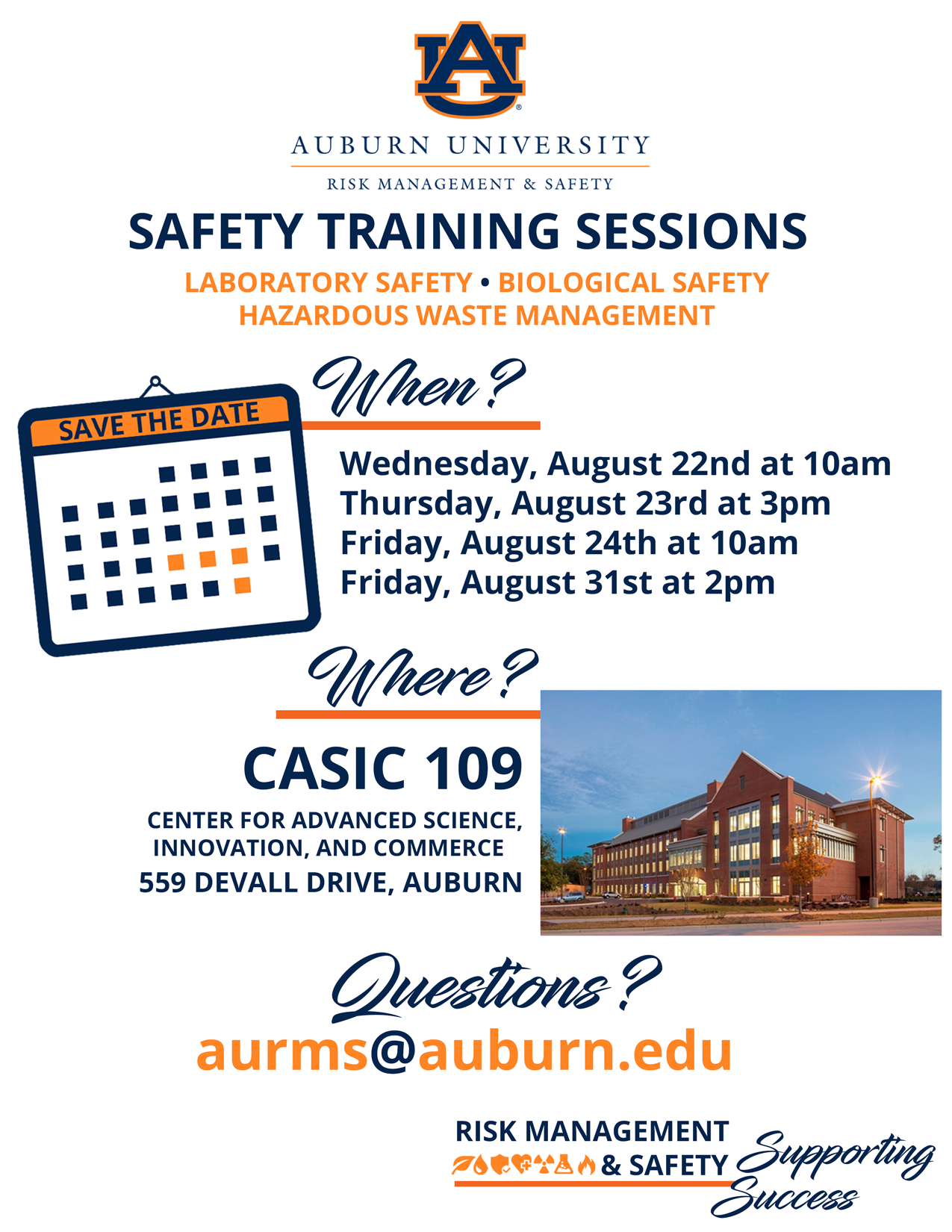
Human Resource Development Class details Auburn Univeristy's OJI Program
6/13/2018
On Wednesday, June 13, Auburn University Risk Management and Safety held a Human Resource Development course on the On-the-Job Injury Program (OJI).
Risk Management Specialists Holly Leverette and Brooke Patton gave real world scenarios and statistics showing how critical proper claim reporting is and the frequency, severity, and type of claims that have been handled by Auburn University.
The majority of the presentation went over how to report an OJI Claim and explained the program in more detail. This will allow for future claims to be handled promptly and properly and will benefit all Auburn University student, faculty, and staff.
Auburn University is exempt from State of Alabama’s Worker’s Compensation laws (25-5-50); however, Auburn’s OJI Program provides financial assistance to injured employees where no other benefits exist. The program is a benefit, not insurance, and provides benefits only after all other applicable insurance coverage has been exhausted. The program’s goal is to help protect employees from financial hardship caused from on-the-job injuries or illnesses. Risk Management and Safety is responsible for administration of the OJI Program.
More information on the OJI program can found at Risk Management and Safety’s website. There you will be able to view today’s presentation, get step by step instructions, and most importantly, file a claim.
For more information on today’s presentation or Auburn’s OJI program, please contact Auburn University Risk Management and Safety at 334-844-2502 or online at auburn.edu/rms.

Risk Management and Safety's Flapjack Forum Helps Educate, Advise, and Inform.
4/9/2018
Auburn University Risk Management and Safety held their quarterly Flapjack Forum on Thursday, April 5th at the School of Forestry and Wildlife Sciences. Guests were treated to free pancakes and a casual and relaxed atmosphere designed to improve communication of university risk across all units, departments, and colleges of Auburn University to better support the University’s mission. In a previous forum, data security was identified at a high impact and high likelihood risk for Auburn University. To help inform, educate, and begin a dialogue on data security; the Office of Information Technology presented recommendations to protect Personally Identifiable Information.
Personally Identifiable Information (PII) is currently defined by Auburn University as Social Security and Credit Card numbers. When PII is compromised through a data breach, it can lead to reputational damage, potential lawsuits and fines, and create a significant administrative burden. According to the 2017 Ponemon Institute Cost of Data Breach Study, the average total cost for a data breach in 2017 was $3.62 Million and the average size of a breach was 24,000 records.
OIT presented easy and hassle free ways to protect your PII on personal and university computers. These included recommendations to not store PII on external devices (such as thumb or flash drives), permanently deleting PII no longer needed (such as old budget files or hiring documents), and emptying the recycle bin of your computer regularly. One example of a recent PII scan by OIT discovered that 50% of the PII that was found resided on external drives. Although some units must handle PII on a regular basis, OIT recommended having secure business processes to help mitigate some of risk. OIT is here to help and aide any department to better protect their PII and determine where any weak points may reside and can be contacted at 334-844-4944. It is recommended that you reach out to OIT and find how to better protect yourself and your department.
Risk Management and Safety is committed to protect people, the environment, property, financial, and other resources in support of Auburn University’s teaching, research, outreach, and student services. The Flapjack Forum helps to accomplish this by understanding the needs and priorities of the university and developing materials and resources to provide guidance. For more information about how to attend the next Flapjack Forum and the mission of Auburn University Risk Management and Safety, please contact Kevin Ives at 334-844-2502 or email at pki0002@auburn.edu .
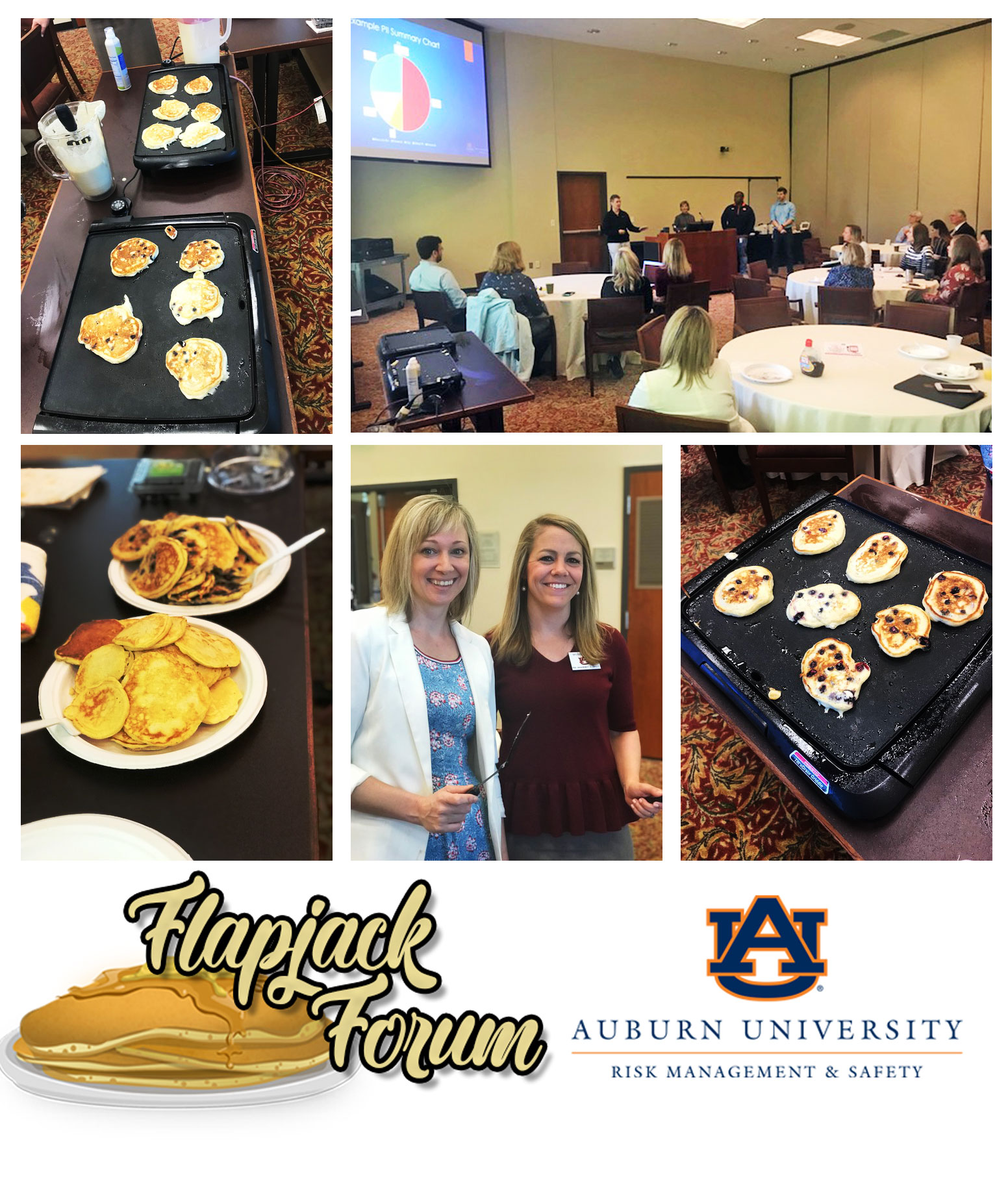
Now Available: New Online Claim Reporting Tool
2/7/2018
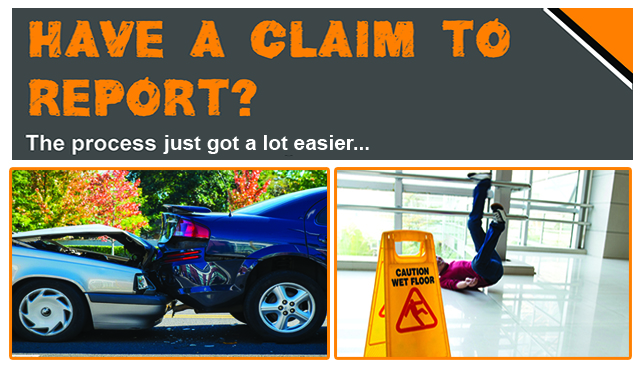 Accidents are difficult enough to get through, which is why filing incident/accident-related claims should not be… Unfortunately, despite advances in technology, few insurance companies today offer online filing options…
Accidents are difficult enough to get through, which is why filing incident/accident-related claims should not be… Unfortunately, despite advances in technology, few insurance companies today offer online filing options…
But at Auburn University, the process of reporting your campus-related claim just got a lot simpler thanks to the implementation of a new web-based claim reporting system, introduced by Auburn’s Risk Management & Safety (RMS). This new system eliminates the need for those reporting an accident/incident to have to contact the third party adjuster PMA Companies through a 1-800 phone number to file their claims.
From anywhere in the world, the Auburn University community can access the RMS website, and, with a simple click of a button, report their incident/accident. The new web-based reporting system streamlines the claim-reporting process, making it easier for the user and allowing for a quicker, more accurate turnaround time on the issue being reported. The new system puts control of claim reporting in the hands of those filing the claim. No phone calls, no waiting for the right time to make contact with a provider, and no hassles.
RMS Risk Management Specialist Brooke Patton said the new system was in the works for some time. “To better serve Auburn University and its community, our transition to this new system will streamline the way employees, students and visitors report accidents occurring on campus,” Patton said. “This system was in the works for the better part of a year, and we are excited to be able to offer this new tool to the Auburn community. Our hope is that the claims reporting process will be much easier for those needing to utilize it.”
Those submitting a claim through the new online system should be prepared with the appropriate information that will make their claim complete, such as the date of the injury/illness and location information for where the injury/illness occurred.
The new online claims-reporting tool is available on the Risk Management & Insurance section of the RMS website. For questions or comments, please contact Risk Management Specialist Brooke Patton at x4-6231.
Need to report a claim? Click here.
VCOM-Auburn Inaugural Disaster Drill Day invites emergency response preparedness collaboration between medical students, AU units and local agencies
6/30/2017
The scene was completely unexpected.
Dozens of second-year medical students in dark blue scrubs milled around the triage tents and tarps, many with looks of uncertainty on their faces, as disaster “victims” were brought into their areas. The “victims,” played by first-year medical students, all had pre-determined injuries and were in various stages of distress. Suddenly, recalling their training, the second-year medical students sprang into action, pulling from the medical skills many of them had cultivated thus far, mostly from a computer screen or classroom.
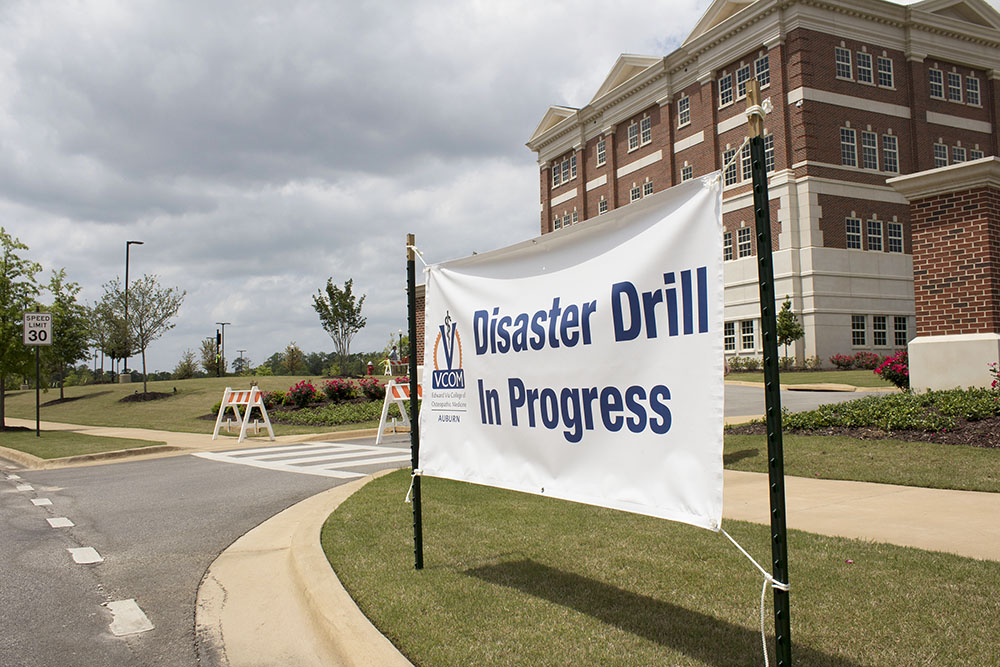 |
| The inaugural VCOM-Auburn Disaster Drill Day took place at the back of |
Such was the atmosphere on April 28 at the inaugural Disaster Drill Day, hosted by the Edward via College of Osteopathic Medicine-Auburn (VCOM) and in collaboration with Auburn University Risk Management & Safety (RMS). Other participants included first responders with the Auburn and Opelika Fire divisions, Auburn University Public Safety and members of the Campus Community Emergency Response Team (CCERT). Through two simulated disaster incidents – including a wreck with hazardous chemical spill and a tornado strike - more than 150 second-year VCOM medical students were evaluated on their emergency response abilities in order to obtain their National Basic Life Support certification.
The participants went into the drill blind, with no clue as to what the disasters would be or of the injuries they would have to know how to treat. The same can be said for real-life mass casualty situations, where every person affected – from local first responders and medical professionals, to universities and community members – must know how to respond in order to survive or save a life.
Though the original purpose of the Disaster Day Drill was to introduce medical students to the realities of a natural or man-made disaster as part of their learning, the overall resulting significance of the event was twofold…
Full-Scale Disaster Preparedness Scenarios Offer Life-Like Learning Environment
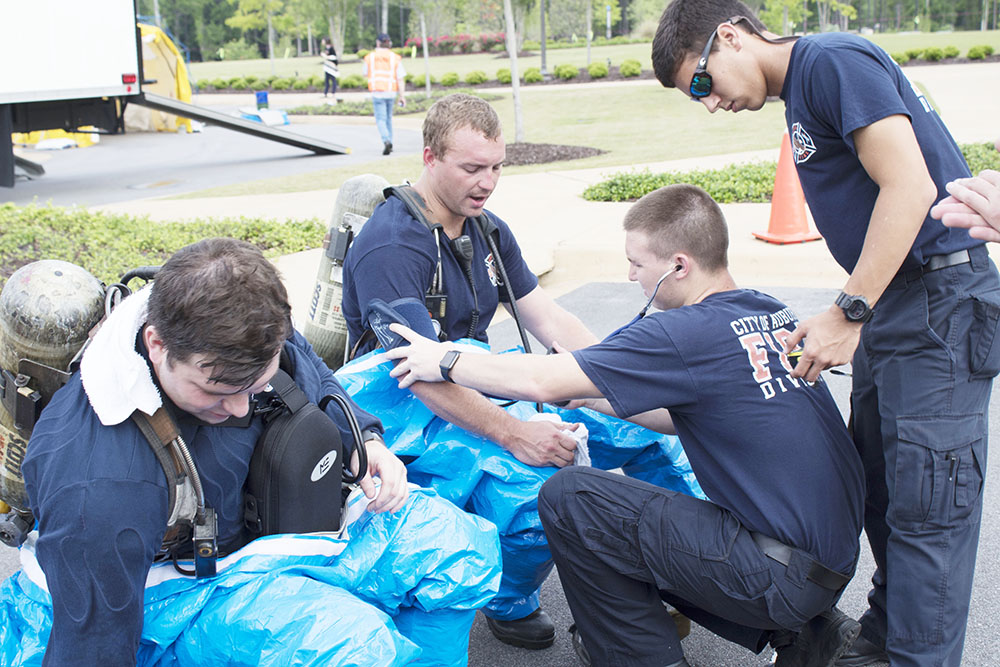 |
| Firefighters and first responders with Auburn & Opelika |
Tornados, fires, flooding, active shooters, bomb threats, hazardous chemical spills, civil disturbance… all these, and more, are risk vulnerabilities faced by today’s public/private universities and colleges.
Campus emergencies involving natural disasters and/or man-made crisis are not new developments in the academic environment, but in the last decade, disasters have affected university and college campuses with disturbing frequency, causing not only death and injury, but also monetary losses resulting from classroom disruption and damages to buildings/infrastructure.
The 2007 Virginia Tech massacre claimed the lives of 32 people. In 2009, students were evacuated from a Central Michigan University building following a chemical spill in a lab where one person was injured. Hurricane Irene caused damage and flooding to five east coast universities in 2011, while the April 27 tornado outbreak wreaked havoc on Alabama campuses just five months earlier. A murder/suicide resulted in nine deaths at an Oregon community college in 2015, and in mid-2017, two separate fires caused mass evacuations and damage at Boston University.
Though disasters themselves are common, colleges and universities that practice massive disaster preparedness scenarios involving students, faculty, staff and outside agencies have just become more prevalent. The State University of New York College at Oneonta (SUNY) has been conducting emergency simulations annually for several years, including simulated power failures, heat waves, and suicide and terrorist attacks. According to the Daily Star, SUNY partners with local police and fire agencies and other first responders “to create drills that are as life-like as possible to best prepare students, faculty and staff.”
Though Auburn University has held disaster drills on campus before, this was VCOM-Auburn’s first experience with disaster simulation and training as part of student curriculum. VCOM is a private, non-profit Osteopathic Medical School, with a campus located in Auburn University Research Park. The college has two other campuses – one in Virginia and one in South Carolina – where disaster simulations and training have been familiar annual events since the 2007 Virginia Tech shootings. Disaster simulations give medical students a closer look at how the environment inside a hospital could be impacted during a mass casualty situation and what type of skills would be expected of them.
 |
| VCOM-Auburn students in theater paint played "victims" of the first disaster scenario, a car crash and chemical spill. |
The first scenario of VCOM-Auburn’s Disaster Drill Day was a wreck involving university vans and a truck carrying hazardous chemicals, resulting in a hazardous chemical spill. Training alongside VCOM-Auburn students during this first scenario were more than 10 local first responders from Auburn and Opelika Fire divisions, and the East Alabama Medical Clinic EMS. Several of them suited up in HAZMAT gear to survey the scene of the accident, get the chemical spill under control and then venture through a life-like decontamination station.
Nearby, “casualties” of the wreck were delivered to the triage station where medical students began to assess their injuries before having them transported inside the school where three different simulated emergency rooms had been erected. Here, the real challenge for the students began. Assessing the wounded, they were tasked with performing various medical procedures on their patients to include delivering a baby from a “casualty” who went into labor (this was completed on a simulation dummy); properly sewing up a flesh wound; and/or inserting an IV, among others.
Second-year VCOM-Auburn medical student Clayton Lester said the hands-on experience of the drill was eye opening for him. During the first scenario, Lester had the opportunity to apply a suture to a wound and to insert a chest tube on a patient.
“I’ve done medical missions before where I learned how to set up a clinic,” said Lester, who was also a graduate of Auburn University. “But this type of learning, early on in my career, has given me a glimpse of what I might expect to see during a real disaster. It was chaotic, but beneficial training.”
VCOM-Auburn Associate Dean for Simulation and Technology Glenn Nordehn, DO, said there is no perfect drill. “However, this was a great training opportunity for the students to use their skills to improvise as well as problem solve the unexpected,” Nordehn added. “The expectation is for the students to learn how to act and how to manage in a disaster situation.”
Serving as the first joint disaster-training event involving VCOM, Auburn University and outside first responder’s organizations, much went into preparing the most useful and realistic disaster scenarios…
Where University & Local Agency Disaster Preparedness Intersect
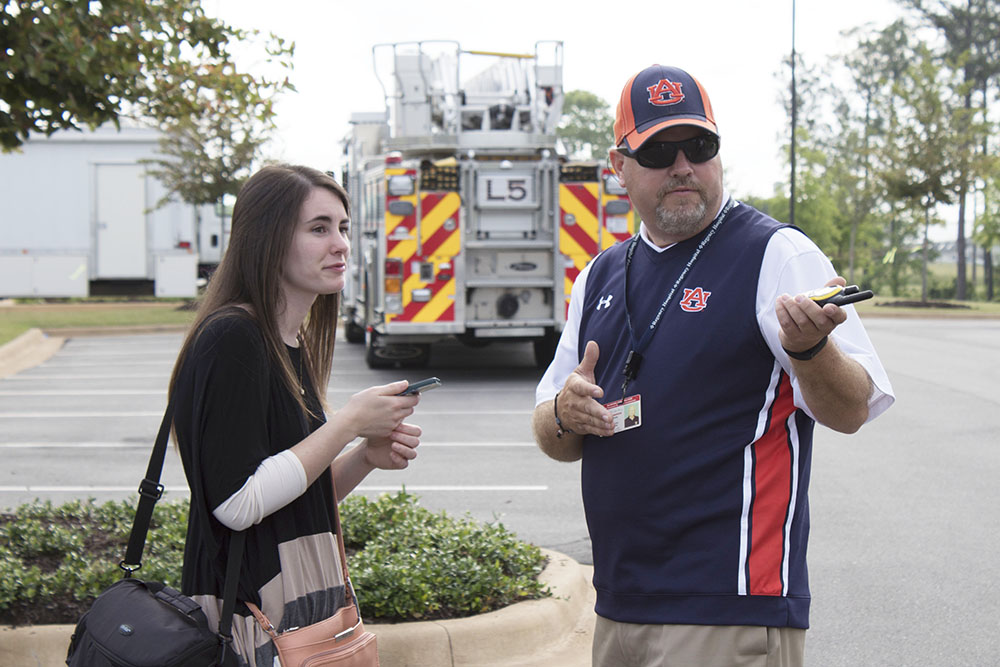 |
| RMS Mike Freeman, pictured with a reporter from the Opelika-Auburn News, was enlisted to plan the VCOM- Auburn disaster scenarios. |
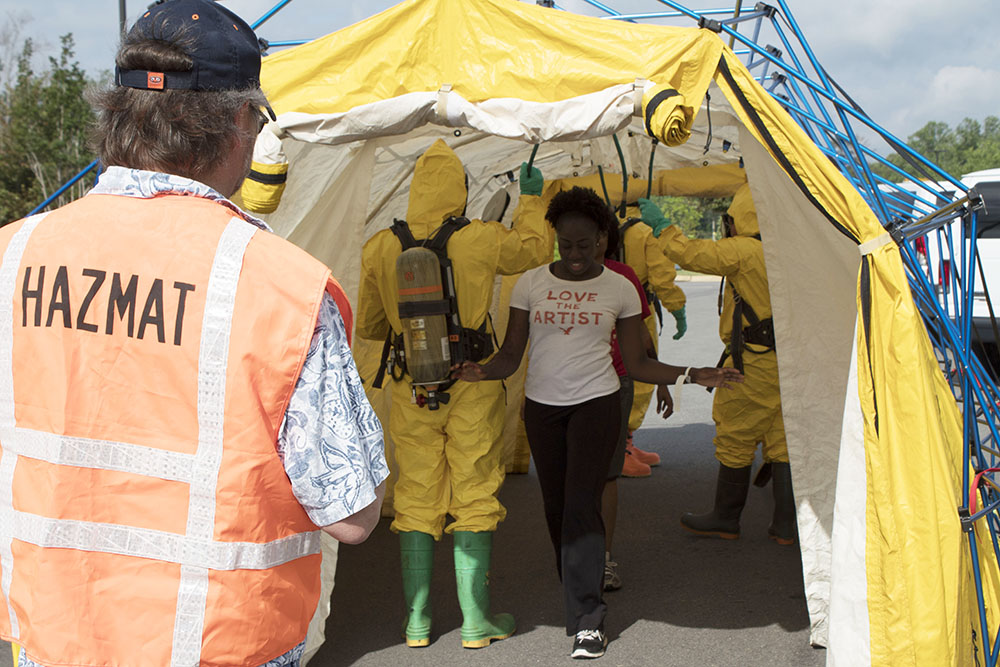 |
| Members of RMS HAZMAT suited up to run the |
Michael Freeman is a 28-year veteran of the environmental health and public safety industries, and has been employed with Auburn University’s RMS Department for more than 10 years. A former member of the U.S. Coast Guard and U.S. Army, Freeman has worked in fire, EMS and law enforcement. As a member of RMS, Freeman is a certified HAZMAT technician, responsible for HAZMAT management, spill response and transportation, among other things.
In January, VCOM contacted Freeman, who had experience conducting tabletop-type drills and had helped to train local responders on HAZMAT specifics, to ask for his help planning disaster scenarios for the Disaster Drill Day event.
“VCOM needed eight hours of instruction for the event,” Freeman said. “They also had certain components their students needed that I had to work into the scenarios. For example, they needed a HAZMAT component, traumas, a mass casualty situation, decontamination and EMS-type training.”
Around these components, Freeman also determined how best to utilize local first responders and university first responders, to maximize training for all. For example, during the chemical spill portion of the first scenario, other members of RMS trained in HAZMAT management, refreshed their skills by suiting up in personal protective equipment and helping casualties through the decontamination station, while local first responders trained in HAZMAT were responsible for utilizing their skills to contain the spill. In addition, members of Campus CERT - groups of trained individuals who have volunteered to take an active role during campus emergencies - got a refresher in search and rescue procedures as part of the tornado strike scenario later that day.
“This was the first large-scale disaster simulation to be held at VCOM-Auburn and in conjunction with local agencies,” Freeman said. “We could have done this without the local agencies, but it would not have been as realistic. If you do not practice real-life scenarios, you will not be prepared."
Deputy Chief of Auburn Fire Division Matt Jordan said first responders do not get the opportunity every day to train for HAZMAT situations. “It’s good to go through the motions like this, and we’ll go back to the station and talk about what we could have done differently,” Jordan said. “Training like this with the university is a benefit for everyone and is the type of infrastructure we want to set up. We like knowing what our resources are.”
With the Disaster Drill Day event, Jordan said local agencies get to combine their training with the knowledge from Auburn University’s subject matter experts to perfect disaster response.
While the various scenarios were playing out on the ground throughout the day, second-year VCOM-Auburn medical student Mike Brisson had quite a different view from above. A part-time paramedic with EAMC, Brisson not only brought along an ambulance to be used as a prop during the event, but also his personal Phantom III drone, which he used to take pictures of and survey the disaster drill scene from the air.
Brisson, also an Army captain and Black Hawk pilot, said his role of the day was to test how applicable drone footage could be, not only to first responders on a scene, but also to medical student training. Drones have become popular allies to first responders in the last few years, being used to more quickly and efficiently survey accident scenes to provide data.
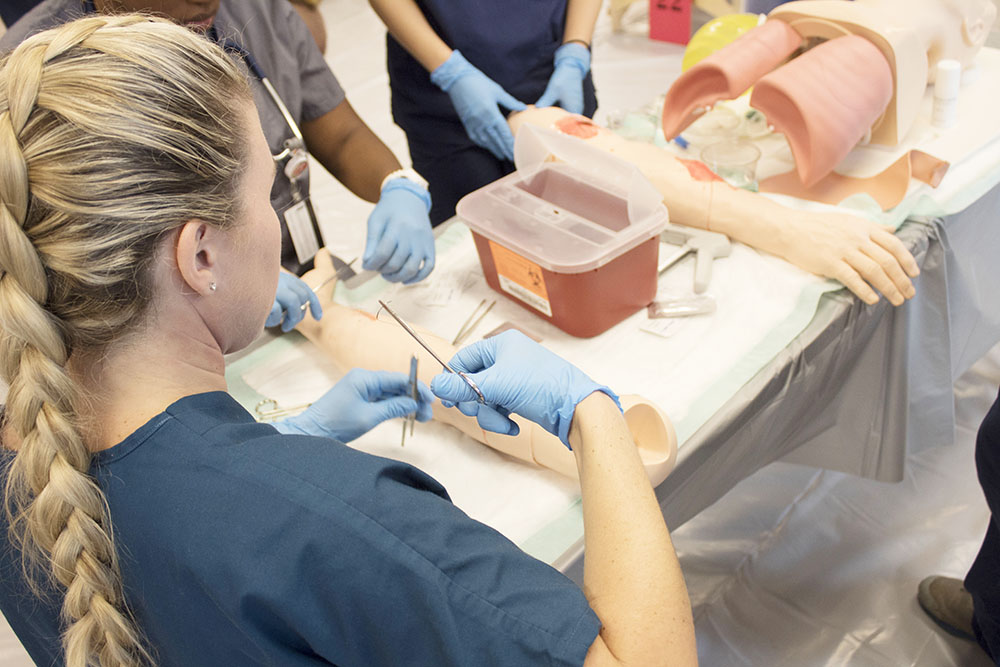 |
| Inside the makeshift hospital, second-year VCOM- |
“I can use this drone to get a better view of what type of hazardous materials have spilled,” Brisson said. “A drone can be sent in to survey a scene, like this chemical spill, ahead of first responders. I could see if the truck in the wreck was registered and determine what types of chemicals it was carrying. This type of information all allows first responders to safely prepare for and enter a scene without endangering their lives further.”
While Brisson’s drone provided invaluable footage for first responders to study, it was also broadcast on YouTube for other VCOM-Auburn students and administrators to watch as the events unfolded.
“It’s invaluable experience to offer these types of scenarios,” Brisson said. “From this vantage point, you get familiar with the entire picture of emergency care. To be able to integrate the medical school with community responders is invaluable training.”
Auburn University RMS is currently working on an official Drone Policy for the university as a result of increased drone usage on campus.
VCOM-Auburn marked Disaster Drill Day 2017 as a success and an important learning opportunity, and hopes to make it an annual event the school hosts going forward, possibly expanding involvement to the greater university community in years to come. To see footage of the April 28 event, click here.
Media Contact: Kati Burns, RMS Communications & Marketing | 334-844-2502 | klb0095@auburn.edu
The RMI Intern Experience: UGA student intern finds home among Auburn family
6/29/2017
Peachtree City, Georgia native Eric Sutliff climbed to the top of Jordan-Hare Stadium at Auburn University. He got “a taste for Auburn” through popular eateries like The Hound, Amsterdam and Coffee Cat, and immersed himself in culture during local music & arts festivals. He volunteered at a food pantry, played guitar in a worship band and found family in a place miles from home.
 |
| Peachtree City, Georgia summer intern Eric Sutliff spent eight weeks with Auburn University Risk Management & Insurance, learning how risk touches all facets of higher education. |
While Sutliff enjoyed the full Auburn experience, he also spent his eight-weeks on campus immersed in the risk management & insurance realm of study as the first intern for Auburn University’s Risk Management & Safety Department (RMS). A hard sought after intern by other viable internship-seeking entities, Sutliff said he chose to accept the internship with Auburn University because he loved the campus and was impressed with how genuine RMS staff were during his interviews.
“I’ve met tons of great people and made some friends for life in Auburn,” said Sutliff, a junior in the Terry College of Business at the University of Georgia. “Everybody, from the community to the RMS staff, have been great, super friendly and willing to help anyone.”
Sutliff’s summer internship was a result of a $5,000 grant awarded to RMS through the Spencer Educational Foundation, the premier organization awarding scholarships and grants in risk management and insurance, and facilitating internship opportunities. The grant stipulated an eight-week internship at 320 hours. Sutliff works Monday through Friday, eight hours per day, just as a full-time employee might. Besides weekly projects with RMS, Sutliff is also tasked with writing a 10-20 page essay on his internship experience for his Risk Management & Insurance Program with the Terry College of Business.
Sutliff always thought he would go into the sciences or engineering field. He had never considered a career in risk management and insurance until a high school graduation party, where the father of one of his friends told him about the field. The father worked as a risk manager for Chick-fil-a headquarters and invited Sutliff to shadow him on the job one day.
“I discovered that risk management and insurance is really just a blending of all the subjects I already loved – science and statistics,” Sutliff said.
Concluding his studies at the University of Georgia, Sutliff will have earned a Bachelor’s of Business Administration, and will have certifications in legal studies and sustainability.
His summer internship with Auburn University RMS was his first taste of risk management and insurance practices in higher education. “I never considered how many different risk areas there are at a large university,” Sutliff said. “I’ve enjoyed getting exposed to these things and learning how they affect the university in a greater sense.
During his internship, Sutliff learned about the many areas that university risk management touches – from athletics and research labs, to museums and dorm rooms. He attended fire extinguisher training classes with members of RMS Fire Safety, performed different environmental and lab safety audits, met with university vendors and learned how to input data into the university’s risk management information system, Origami.
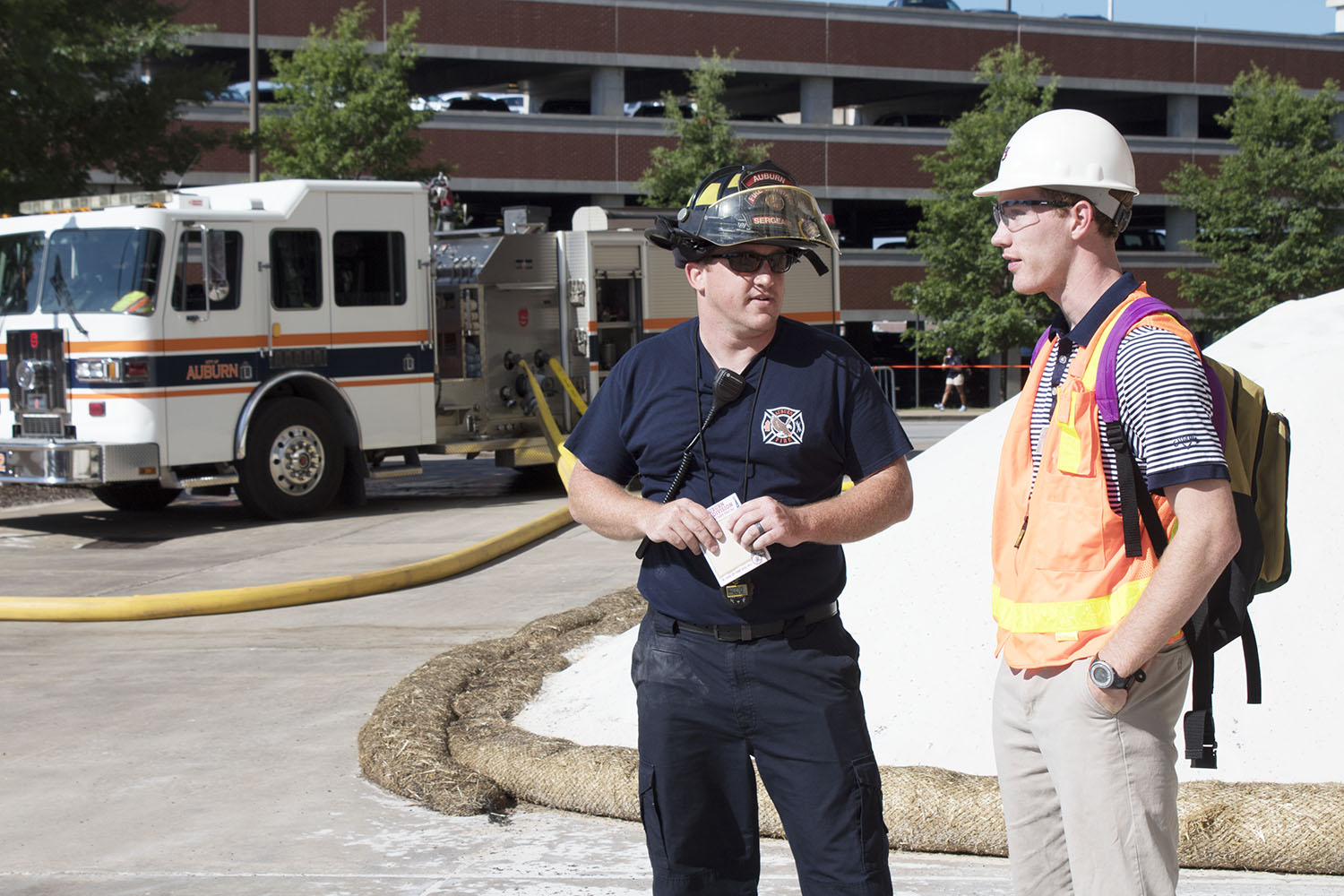 |
| Sutliff got the opportunity to work with University Risk Management and Safety on a number of projects, including one that involved a special fire-safety training day with the local fire division. |
One of his favorite experiences during the internship was a special fire-safety training opportunity between the Auburn Fire Division and RMS at Jordan-Hare Stadium. The university contractor Brendle Sprinkler Company was testing the stadium’s dry sprinkler system for the first time in five years, giving the fire department a unique opportunity to conduct an on-scene fire-fighting scenario at the stadium using their newly purchased high-rise equipment in preparation of the university’s upcoming football season.
“It was fun seeing how the university and the fire department might prepare for a catastrophic event, like a fire during a game, and it was also interesting to learn how RMS partners with the local community and other university units to ensure a safe environment for all,” Sutliff said.
At the University of Georgia, Sutliff is involved with Special Olympics UGA and is a Terry College of Business Ambassador. He is the chair of professional development for his fraternity GAMMA IOTA SIGMA (the international business fraternity for students of insurance, risk management and the actuarial sciences) and is involved with the university ministry, the Wesley Foundation. Sutliff’s time interning with Auburn University RMI, he said, has been helpful in teaching him how to deal with other people on a professional, as well as, relational level in an office setting.
Risk Management Specialist Patrick White, who was the main mentor for Sutliff in RMS, said as the first intern for RMS, Sutliff has set the bar high for future interns.
"Eric's refreshing work-ethic and thoughtful, deliberative attitude have contributed greatly to the advancement of our mission here in Risk Management," White said. "He has been exposed to a vast array of our operations here on campus, and he offers thoughtful questions and possible solutions to better serve each area. Our hope is that Eric can use the knowledge gained in this experience to not only further his career, but also make a meaningful difference in the world of Risk Management."
Sutliff has developed a special interest in the sustainability side of risk management. He will be pursuing a certificate of sustainability. "I've always been interested in the holistic well-being of our planet,” he said. “I think sustainability addresses social justice, economic growth, and environmental stewardship in an attainably realistic manner. My experience with the environmental safety team with Auburn University RMS has shown me applicable ways to address these goals in the risk management industry.”
“I’m excited to get into the insurance industry and to combine some of the things I have learned with other areas I’m passionate about. The Auburn family is a real thing; people are truly interested in who you are and in helping you. I am very thankful for this, and for how open and inclusive the RMS staff have been. It has been a great hands-on learning experience.”
Special Firefighter Training Day at Jordan-Hare: Auburn Fire commends RMS for help making game days safer for fans
6/29/2017
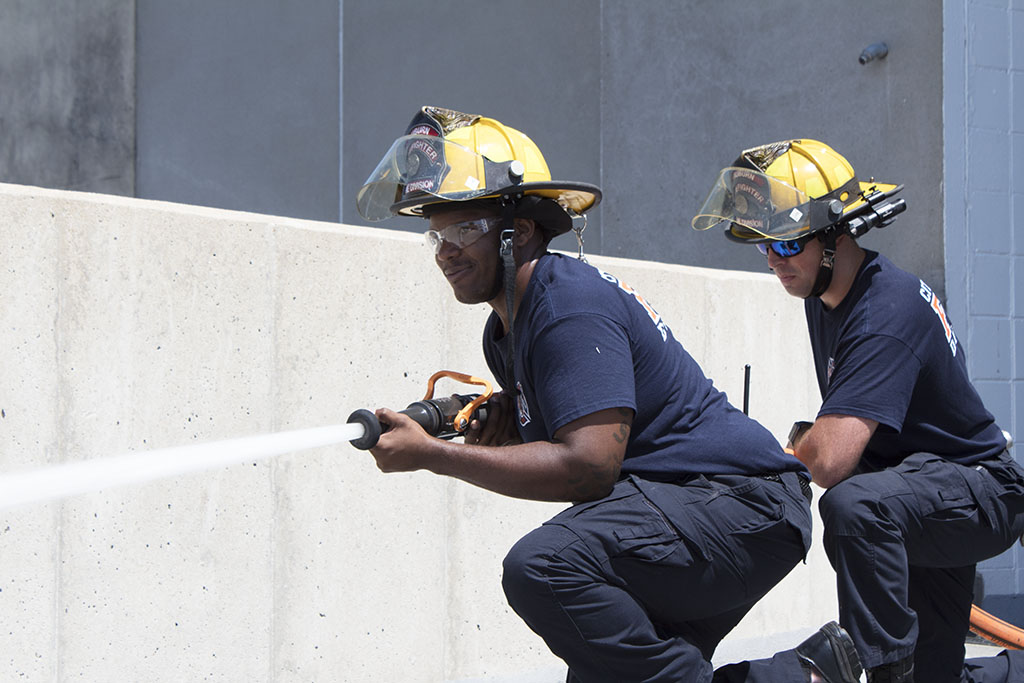 Despite recent days of dark clouds and heavy rainfall, firefighters with Auburn Fire Division were thankfully met with sunny blue skies for their training at Jordan-Hare Stadium on June 8. It had been a busy night and morning for Auburn firefighters, with more emergency calls than usual, but close to 10 firefighters were on hand for the special fire safety training the division had desired to do for more than a year.
Despite recent days of dark clouds and heavy rainfall, firefighters with Auburn Fire Division were thankfully met with sunny blue skies for their training at Jordan-Hare Stadium on June 8. It had been a busy night and morning for Auburn firefighters, with more emergency calls than usual, but close to 10 firefighters were on hand for the special fire safety training the division had desired to do for more than a year.
The fire department partnered with Auburn University Risk Management & Safety (RMS) to receive important training on the stadium’s wet and dry fire protection systems, while university contractor Brendle Sprinkler Company and RMS tested the sprinklers at the same time. This testing of the stadium’s dry water fire protection systems happens every five years, a requirement of the National Fire Protection Association.
“This was a once-in-every-five-years opportunity for the fire department to get some hands-on experience on-site, at an outdoor location where they would actually be able to use high-pressure water hoses while training,” said Chris Carmello, RMS Safety & Health Programs manager. “There are important differences between a “wet sprinkler system” and a “dry sprinkler system” that made this training at the stadium more attractive to the fire department.”
Wet sprinkler systems always have water in the pipes, but dry sprinkler systems, such as some of the standpipe systems at the stadium, do not, which means there will be a bit of a lag in the time it takes the water to spread throughout the pipes when charged. There are five fire hydrants around the stadium and two standpipe systems inside the stadium.
The training began on the ground level of the stadium with firefighters and staff with Brendle testing the pressure of the water and releasing any old water standing in the pipes. Firefighters then carried hoses up five flights of stairs to the very top of the stadium where they hooked up to the stadium’s standpipe system and waited for the hose to fill with water.
“It’s invaluable that we have this kind of training where some 80,000 fans could be gathered,” said Jeff Nolin, Auburn Fire Division battalion chief. “We need this kind of muscle memory and the experience of stretching the hoses in a building that we’re actually going to be working in.”
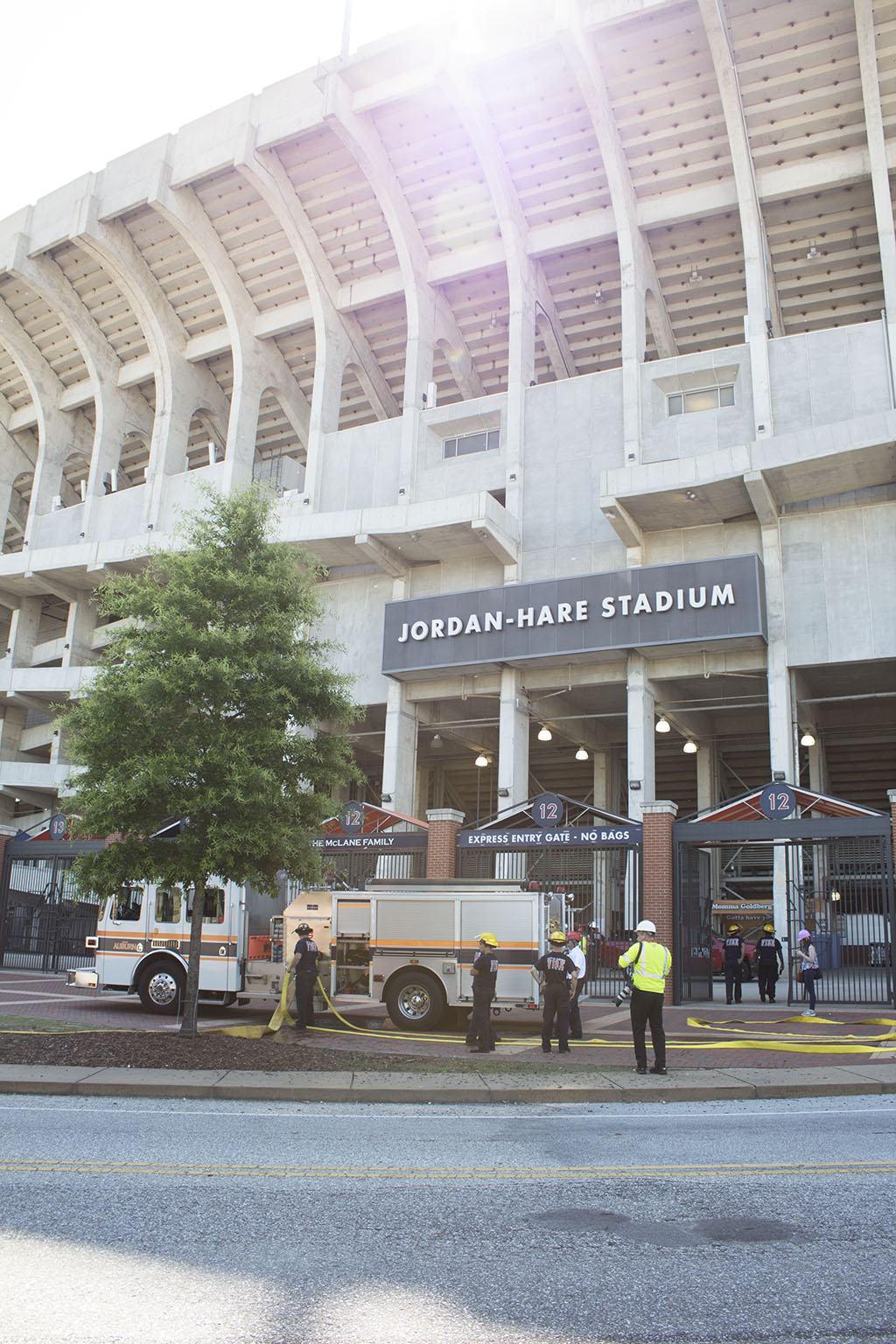 The training lasted from 8 a.m. until about noon. The testing allowed both firefighters, RMS and Brendle to find any leaks, breakages or other defects throughout the system.
The training lasted from 8 a.m. until about noon. The testing allowed both firefighters, RMS and Brendle to find any leaks, breakages or other defects throughout the system.
“These scenarios help us to think about logistics ahead of time, like where we need to have personnel during game days and any situations they might run into trying to get to the fire,” said Deputy Fire Chief Matt Jordan. “If there is a fire, we’re going to have to evacuate people, move people around also.”
The stadium training was the first opportunity the Auburn Fire Division has had to use the “high-rise packs” purchased specifically for the stadium almost two years ago. The division typically has firefighters staged at the stadium during game days, with additional personnel to call-in if need be.
“This time of year, we’re thinking about football season, putting our people in place and just preparing for any new developments – like new constructions that may have gone up that could affect our response times or typical staging areas,” Jordan said.
“It’s our job to prepare for “worst case scenarios.” The university has done a great job making this a safe environment for the university community and the fans. RMS does a great job collaborating with us, inspecting fire extinguishers ahead of time, and managing contractors and vendors. We are always very impressed with their help.”
Media Contact: Kati Burns, RMS Communications & Marketing | 334-844-2502 | klb0095@auburn.edu
Media Coverage: Inaugural VCOM Disaster Drill Day
5/1/2017
On Friday, April 28, Auburn University’s Risk Management & Safety (RMS), several other campus units and local first-responder agencies from the community, took part in the university’s first ever Disaster Drill Day, hosted by the Edward Via College of Osteopathic Medicine-Auburn, or VCOM.
“Disaster Drill Day” was an emergency response training and disaster simulation event specifically for second-year VCOM medical students, who were evaluated that day by VCOM faculty on their ability to respond and triage casualties. More than 150 second-year students participated as part of evaluation, while another 100 students played the roles of “casualties” or other necessary characters.
To see photos of the event, visit @AuburnRMS on Twitter or search for the hashtag #VCOMDisasterDrill. Several members of the media covered the event extensively including the Opelika-Auburn News and WSFA 12 News of Montgomery. See the full stories below.
Inaugural Disaster Day prepares responders, students for worst, Opelika-Auburn News
Disaster Drill helps first responders, students in Auburn, WSFA 12
Managing Cybersecurity in Higher Education
3/30/2017
From United Educators, March 30, 2017 - Ever-evolving cybersecurity attacks constantly threaten higher education institutions. Last year, the education sector moved from third to second—tied with business—in the number of breaches by industry, with health care in the No. 1 spot, according to Symantec’s 2016 Internet Security Threat Report. The EDUCASE Center for Analysis and Research (ECAR) found 562 reported data breaches at 324 higher education institutions between 2005 and 2014. Those breaches represent about 15.5 million records.
Breaches and their aftermath are costly... Higher education institutions possess massive amounts of data, including personal information about students, faculty, staff, and donors, making them tempting targets for hackers and other digital criminals...
Discussed in this article:
- Security measures higher education institutions are taking
- Definition of the "Human Factor" some institutions are using to train their communities
- Outreach beyond just campus
- Tips for preventing breaches
Continue reading the full story on Cybersecurity in Higher Education.
Celebrating "Insurance Careers Month" - Meet Our RMS Staff
2/22/2017
Valentine’s and groundhogs, heart health and Superbowl Sundays – these are the things we most commonly associate with the month of February each year. However, since 2016, the insurance industry has been recognizing February for a special time all its own – Insurance Careers Month.
According to insuremypath.org, Insurance Careers Month is a cross-industry, multi-phased initiative designed to raise awareness of the dynamic career opportunities in the risk management and insurance profession, and to recruit the next generation of industry leaders. Unfortunately, many students and young professionals have no idea these careers even exist or, at best, they have a genuine misunderstanding of the risk management and insurance fields.
To help bring awareness to this lucrative field, throughout February, Auburn University Risk Management & Safety will highlight several of our dedicated Risk Management & Insurance (RMI) staff members, who will share their experiences and perspectives on a field that has shaped their lives, from the higher education RMI standpoint.
Participate in the national conversation about Insurance Careers Month by following #InsuranceCareersMonth and #CareerTrifecta on social media.
Meet Patrick White, Risk Management Specialist
White Finds Variety & Opportunities in Insurance Career
As an undergraduate student at the University of Georgia in the early 2000s, Patrick White was drawn to the Risk Management & Insurance field because of the vast array of opportunities available. From production to underwriting, to claims and loss control, among others, the field offered a wide variety of career options.
White has worked as a commercial account executive handling global accounts for an insurance group, and an account representative for State Farm, among others. He came to work in higher education in 2015 as an Auburn University Risk Management Specialist, a setting he finds particularly appealing.
“The risks inherent to higher education are very unique when compared to the commercial sector,” said White, who is currently pursuing a master’s in higher education administration. “I have enjoyed applying what I have learned over my years in the industry while at the same time learning how the higher education model differs from the commercial accounts I worked with in the past.”
Analytical by nature, White enjoys policy review, and providing counsel and advice on how to address risks facing Auburn University. His day-to-day job responsibilities consist of managing the university’s automobile self-insurance program; overseeing the administration of the University Fleet Policy; handling claims; collecting information from departments to provide to the university’s insurance companies; and reviewing contracts, among others.
“Insurance has opened many doors for me in my career,” White said. “It has also opened my eyes to many ways that risk management and insurance can affect the quality of life for so many individuals.”
Here’s what else he had to say about his experiences in the risk management and insurance industry thus far.
What would you say is the most difficult part of your job?
WHITE: The most difficult part of my job is that I have to be a professional at reacting to situations as they come my way. As a planner, I find it hard sometimes to switch gears from the comprehensive projects that I may be working on to deal with the pressing issues that can come through our office on any given day, such as claims or general questions regarding the risk implications of various activities across campus.
Do people misunderstand your industry? If so, in what ways and why do you think there is misunderstanding?
WHITE: Many people on the outside see us as the “no” people – trying to find ways to keep fun things from happening. However, we like to have fun, too. We just want people to be safe, and we want to make sure the university’s interests are protected, which benefits us all. Getting people to think about all the risks associated with any given activity can be challenging at times.
What is the biggest obstacle facing the insurance industry right now? How will you work to overcome it in your position?
WHITE: It has been widely documented that a mass exodus of insurance talent is imminent due to the aging work force. Coupled with the struggle to recruit new talent to the field, this will present somewhat of a crisis in the next decade. I work hard to promote our industry and encourage new talent to consider risk management and insurance as a career. Our department is hiring an undergraduate intern this summer for that very reason, and I play an integral role in the planning and administration of this exciting opportunity. Having completed an underwriting internship while an undergraduate, I appreciate the invaluable experience an internship can afford for someone looking to choose a career path.
What advice would you give to someone thinking of seeking a career in your industry?
WHITE: My advice would be to work in a customer-facing position in the early stages of your career. I always said I did not want to go into sales, but then I ended up working in insurance production for almost eight years before coming to Auburn. Having to put myself out there and learn how to market a product gave me a better understanding of how to market myself. Also, start early with securing industry credentials like CPCU or ARM. It only gets harder to complete those designations as you get older and take on more responsibility.
Meet Melissa Agresta, Auburn University Risk Manager
Former Art Student Finds Creativity in RMI
 Auburn’s University Risk Manager Melissa Agresta began her career in risk management in a way that many people might not consider – working with art museums. The Virginia native and mom of three earned a bachelor of arts in studio art and art history from James Madison University; a master’s in risk management & insurance from Florida State University; and she is currently pursuing a doctorate of philosophy in adult education from Auburn University.
Auburn’s University Risk Manager Melissa Agresta began her career in risk management in a way that many people might not consider – working with art museums. The Virginia native and mom of three earned a bachelor of arts in studio art and art history from James Madison University; a master’s in risk management & insurance from Florida State University; and she is currently pursuing a doctorate of philosophy in adult education from Auburn University.
Agresta “happened upon” the insurance industry when she took a position right after undergraduate school working as a technical assistant and, later, vice president for specialty areas for private brokerage firm Willis Towers Watson in Arlington, Virginia. Her work focused on insurance and risk evaluation/development for some of the nation’s most prestigious art museums, galleries, dealers, collectors and universities. Many of her clients were risk managers for higher education institutions and, through their influence, she grew fond of the idea of working in risk management for a university.
Agresta began work at Auburn University in 2012 as a risk management specialist and moved into the role of university risk manager in 2015. She oversees four other risk management specialists and works diligently to ensure her department’s responsibilities align with the university’s mission. Not only does her team uncover new risks but they also advise the university on how to address them.
Did You Know: CNN Money chose “risk management director” as the No. 2 job in America, second only to “mobile app developer,” on its list of top 100 careers in 2017 with “big growth, great pay and satisfying work.”
In her spare time, Agresta still enjoys art and photography, but she has found the field of risk management and insurance does offer opportunities for those with creative minds. “It’s a field that requires the generation of new ideas and problem solving, something those with an artistic side thrive on,” Agresta said. “RMI is continually changing and offers many opportunities to make a difference. You could be risk manager for a diversity of organizations, ranging from anything such as a large manufacturing company or a city, to a national park or even an NFL team.”
Here is what else Agresta had to say about her more than 10-year journey into the risk management and insurance industry, and advice she has for young minds considering pursuing a career in RMI.
What are some of the differences in working in RMI somewhere else as opposed to higher education?
AGRESTA: After spending nine years working in the corporate world, I would say the biggest difference is the culture. In the corporate world, and especially a company with stockholders, there is always a preoccupation with profits and financial growth. It is competitive and fast-paced. Sweeping changes are sometimes implemented unexpectedly. In higher education, the focus is more on supporting a university’s mission, which is not making money, but serving the community and providing world-class education and research. Change is more gradual and, in general, the environment is supportive of employee professional development and less concerned with internal competition. That is not to say one is better than the other though, as they each offer unique perspectives. However, where one will be most satisfied will depend on your personal characteristics and goals.
What is the most difficult part of your job?
AGRESTA: The most difficult part of the job is effectively communicating what RMI does and why it is important, so that others understand we are trying to help. In order to be a good risk manager, you have to build credibility and relationships with a wide variety of people. If you are not successful at this, then you will not be able to effect positive change and promote a healthy risk culture in your organization.
Why do you think people misunderstand what RMI is and what it does?
AGRESTA: Society tends to have a negative view of the insurance industry as a whole. Words like “boring,” “unfair,” or “greedy” come to mind. What people misunderstand is that insurance is the financial backing allowing businesses to prosper without the worry of financial ruin. It is a basic building block of a sound economy.
How has your career in risk management and insurance changed/defined your life?
AGRESTA: My insurance career has spanned different organizations, as well as, having given me the opportunity to be on both the sales side and the client side. Through my work, I have had the opportunity to visit Lloyds of London where I learned the history of the industry and how it ties into the greater economy. By being in an academic environment, I have been inspired to become a lifelong learner. I have had the pleasure of working with people from all different types of backgrounds, such as wealthy art collectors, academics and fellow administrative staff here at Auburn. I have gotten to witness first-hand the problems facing our society and the solutions people are always creating. I feel that it has helped me become a well-rounded individual, one who has learned how to communicate and relate to many different people.
What advice would you give to someone thinking of seeking a career in your industry?
AGRESTA: I think the risk and insurance industry is an exciting field that offers many opportunities for success. For anyone wanting to enter the industry, I recommend a few things. First, tailor your education. Many institutions offer degrees with a focus on risk management & insurance. Additionally, obtaining insurance industry designations such as the CPCU, ARM or CRM, which will add to your credibility and knowledge, and really give you an advantage over other candidates. Second, make industry connections and develop relationships. Find a good mentor. Third, try to get relevant experience as soon as possible. Internships and/or apprenticeships are a great opportunity. Consider taking jobs that are entry level and not necessarily your dream job, but a stepping-stone. Last, do not be afraid to keep your opportunities open geographically, if possible, otherwise you will be severely limiting your potential.
"Cookies & Contracts" course prepares AU employees to act as university facilitators
2/6/2017
Close to 30 Auburn University employees attended the “Principles of University Contracting & Risk Transfer” workshop on Jan. 26.
The 3-hour course offered attendees a basic understanding of contract law and strategies for transferring risk away from the university. Auburn Contract Officer Courtney Raville and University Risk Manager Melissa Agresta led the workshop, attentively fielding questions from attendees throughout the presentation. Though a tough topic, Raville and Agresta simplified the process by dividing attendees into teams for Q & A style games that helped them digest the material easier.
During the break, attendees enjoyed homemade chocolate chip cookies and milk, provided by the workshop leaders.
A university contract is a contract between Auburn and a third party, not agreements between Auburn units. By completion of the course, attendees had learned about:
- Contract elements, such as mutual assent, offer and acceptance, capacity/authority, consideration and legality
- Special university issues, such as sovereign immunity, competitive bid law and public works law
- Primary methods of risk transfer, among other things
To attend a class like this or others, login to AU Access and visit “Fast-Train.”
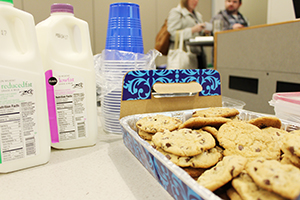 | 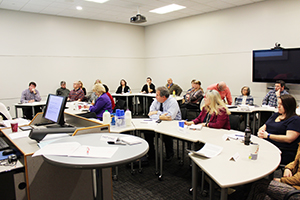 | 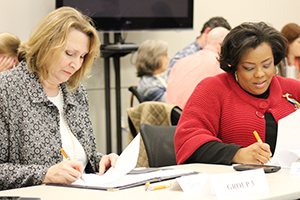 |
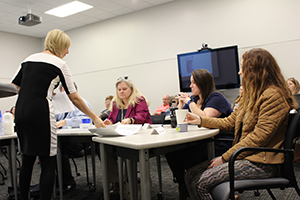 |  | 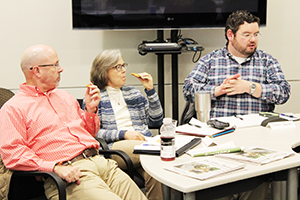 |
National Fire Protection Association offers fire safety tips on crowded buildings
12/15/2016
![]() Take necessary precautions to protect yourself in crowded buildings this holiday season and always be aware of your surroundings were just two of several tips offered by the National Fire Protection Association (NFPA) on Tuesday, Dec. 13. The NFPA delivered the tips following the recent fire catastrophes in Gatlinburg, Tennessee, Oakland, California and Cambridge, Massachusetts, urging people to not be complacent.
Take necessary precautions to protect yourself in crowded buildings this holiday season and always be aware of your surroundings were just two of several tips offered by the National Fire Protection Association (NFPA) on Tuesday, Dec. 13. The NFPA delivered the tips following the recent fire catastrophes in Gatlinburg, Tennessee, Oakland, California and Cambridge, Massachusetts, urging people to not be complacent.
In early December, a small forest fire in the Great Smoky Mountains National Park, Gatlinburg, Tennessee, grew into an uncontrollable inferno as a result of sudden high winds and dry weather, burning thousands of homes and businesses, and killing 14 people. In Oakland, California, a deadly fire engulfed a warehouse during an electronic dance concert, killing at least nine people. And in Cambridge, Massachusetts, a massive, fast-moving 10-alarm fire – described as the largest seen in Cambridge in more than 35 years – destroyed 11 buildings and several cars before it was contained.
According to NFPA President and CEO Jim Pauley in a statement to Occupational Health & Safety Online, these reminders are particularly important during the holiday season, when public areas are often overcrowded. “Most people don’t consider fire a significant risk, and complacency is one of the greatest dangers when it comes to fire safety,” Pauley said. “No one ever thinks it will happen to them. We hope these tragic incidents remind people that fires can and do happen, and that they need to be prepared in the event of one.”
NFPA’s fire safety tips for entering and spending time in crowded buildings include some of the following reminders:
- Be aware of surroundings. Are exits visible and easily accessible? Know your escape route ahead of time. If exits are blocked, file a complaint with the local fire marshal.
- Have a communication plan in place. In the event of an emergency, know who you will contact, and designate a “family meeting spot” outside of the building.
- React immediately. If an alarm sounds or there is smoke, exit the building. Do not return to the building for any reason; let trained firefighters conduct their operations.
For the full release from the NFPA, visit ohsonline.com. For specific questions or concerns about fire safety on the Auburn campus, visit RMS Fire Safety.
RMS participates in SGA Town Hall, talks threat reporting & new student rental insurance
11/17/2016
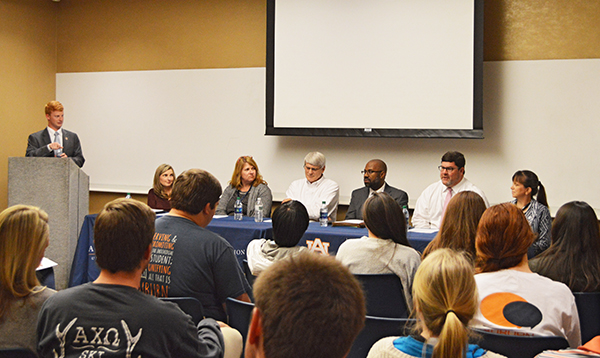 |
| Representatives from various areas of campus participated in the Student Government Association's Town Hall Meeting on Nov. 15, fielding questions of concern from a crowd of more than 40 students. Photo Credit: Kelsey Prather. |
Dining options, residence hall issues and campus safety were topics of concern during the Tuesday, Nov. 15, panel-style Auburn University Student Government Association (SGA) Town Hall Meeting held in the Student Center. This was the first panel discussion held by the SGA in a couple of years, and more than 40 students were in attendance.
Representatives from Auburn’s Risk Management and Safety (RMS), Tiger Dining, Parking Services, Housing and Residence Life, and Public Safety participated in the discussion, listening attentively to student concerns and giving updates on various campus projects of interest. SGA Advisor Brad Smith said the purpose of the Town Hall was to give the student body a chance to voice their opinions to representatives of areas where they traditionally have concerns. A second Town Hall Meeting is planned for spring 2017 and will feature representatives from other areas of the campus.
SGA President Jesse Westerhouse led the panel discussion, reading from a list of previously submitted student questions the SGA had gathered from Auburn Answers. RMS Executive Director Christine Eick and Risk Management Specialist Holly Leverette represented RMS during the discussion.
Risk Management and Safety-related concerns arising from the discussion included the following:
- On the topic of how the university handles campus hate crimes or bias, Associate Director of Public Safety Susan McCallister said the university does not tolerate hate crimes and that any such issues should be reported immediately to Public Safety.
RMS Executive Director Eick also added that the university has a Threat Assessment Team in place to investigate such incidences. The goals of the Threat Assessment Team are to advise on incidents involving members of the university community who pose, or may reasonably pose, a threat to the safety and well-being of themselves or others. Any member of the university community who becomes aware of such a situation can report the matter to the team.
To make a report to the Threat Assessment Team, call 334-844-5010 or email autat@auburn.edu.
- On the topic of key issues faced by RMS or any updates, Eick mentioned the relatively new Student and Employee Renter/Property Insurance Program provided to Auburn students, faculty and staff through the Arthur J. Gallagher & Company. The program, designed specifically for college-related audiences, offers deductibles as low as $25, much less than a Homeowner’s deductible. The benefits of the policy includes such things as replacement cost valuation; flood and earthquake coverage; and limited identity theft expense coverage.
“There are different levels of the policy that you can purchase, and it is very affordable,” Eick said. “We are always looking for opportunities to assist students in any way that we can.”
Visit Student and Employee Renter/Property Insurance to learn more about why the program might be right for you or to purchase coverage.
In other updates, Eick said RMS is also working on safety initiatives to reduce the amount of potentially hazardous chemicals used in labs on campus.
Other safety-related topics of interest during the panel discussion:
- McCallister of Public Safety said that date-rape drug concerns are a topic of heavy interest from both students and parents alike. She said victims of date-rape drugs often fail to get the incident reported before the drugs have left their system. Educating students on the topic so they have a better awareness will be a priority going forward.
- In regards to “community policing,” McCallister said that Public Safety is going through some changes, which will include the addition of more police officers from Auburn Police Department on campus. The officers will not be on a rotating schedule as before, however, but will be a staff dedicated specifically to the university. This will allow officers to get more familiar with the university community and to do more outreach.
SGA Town Hall Meeting, Nov. 15 - Risk Management & Safety to participate
11/9/2016
Representatives from Risk Management and Safety, Dining, Residence Life and Parking Services will participate in the SGA Town Hall Meeting on Tuesday, Nov. 15, from 6 p.m. to 7:15 p.m. in the Auburn University Student Center. Students will have the opportunity to learn more about these respective areas, and to voice any questions or concerns they might have.
For more information about the Town Hall Meeting, visit Auburn SGA on Facebook.
Meeting location:
Auburn University Student Center
255 Heisman Drive
Auburn, AL 36849
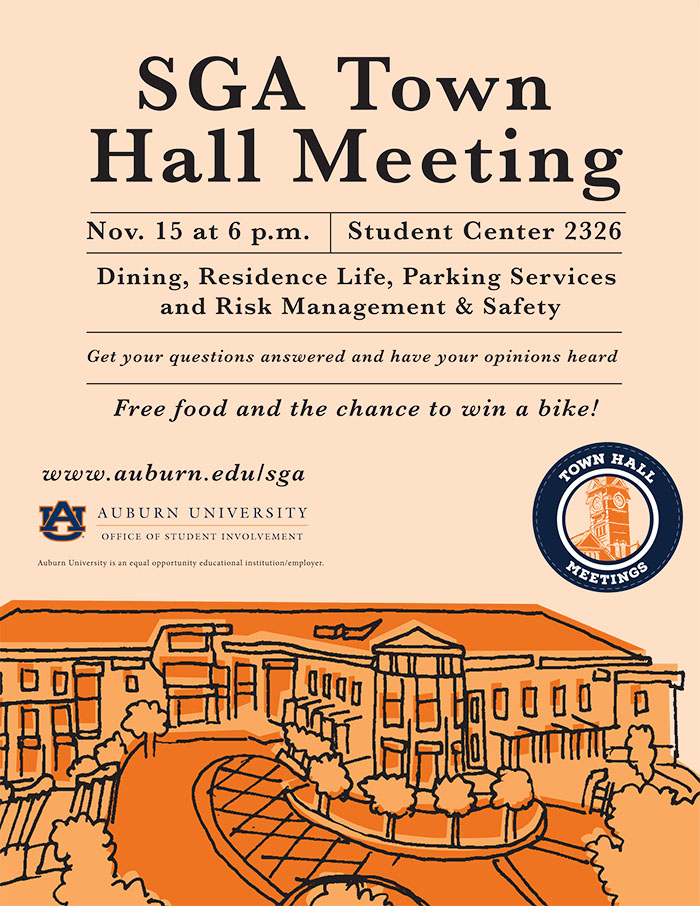
Alert from Risk Management and Safety regarding Samsung Galaxy Note 7 phones
10/12/2016
Due to reports of "overheating" and other safety risks involving the Samsung Galaxy Note 7 phone, Auburn University Risk Management & Safety is advising all individuals in possession of this device to follow the manufacturer's instructions as stated in the following link: http://www.samsung.com/us/note7recall/
Samsung is asking all carrier and retail partners here and around the globe to stop sales and exchanges of the Galaxy Note7. Since the affected devices can overheat and pose a safety risk, Samsung is asking consumers with an original Galaxy Note7 or a replacement Galaxy Note7 to power it down and contact the carrier or retail outlet where the Galaxy Note7 was purchased. If you bought your Galaxy Note7 from Samsung.com or have questions, you should contact Samsung at 1-844-365-6197 for further assistance.
Public Safety Advisory: Pokémon Go
7/13/2016
Auburn University Campus Community,
As many of you are aware, the game Pokémon Go has become very popular over the past week. The game gets people outside, walking, and interacting with each other in a fun environment. However, it also poses some risks.
At about 3:00 a.m. today, Auburn Police responded to a report of a robbery near the Jule Collins Smith Museum. The robbery victim notified police immediately and the four robbery suspects were quickly apprehended. The victim did sustain minor injuries but was treated at East Alabama Medical Center and released. The preliminary police investigation indicates that the robbery suspects were using the Pokémon Go game to target the suspect.
For your safety, if you are playing Pokémon Go, please remember the following:
• Pokéstops and Pokégyms are focal points that attract more users. Criminals may take advantage of this. Make sure to look up, look around, and be aware of who and what is around you. It's best to visit Pokéstops and Pokégyms during the day, with a friend or in a group.
• Avoid areas that are isolated, especially if you are alone.
• Some Pokémon will randomly appear in dangerous locations, such as roads, bodies of water, or inside construction sites. Realize when one is out of reach and don't risk your safety to retrieve it!
• Some Pokémon appear on private property. Do not trespass to catch Pokémon.
• When looking for Pokémon, you may become overly focused on your phone screen and become oblivious to your surroundings. This goes back to being aware of your surroundings. Look out for obstacles, tripping hazards, and other dangerous situations.
• Avoid parking lots, roadways and busy intersections. Try to stay on sidewalks and in designated crosswalks as much as possible. It is your responsibility to make yourself visible to vehicles, bicyclists, and other pedestrians. Always follow traffic safety rules.
• You should never catch Pokémon (or do other screen-intensive things on your phone) while operating a motor vehicle, bicycle, or skateboard. It creates a hazard for you, other drivers, bicyclists, and pedestrians.
• If using earbuds, leave one ear open so you can hear what is happening around you.
• Keep your information secure! Make sure to check your Pokémon Go security settings so you know what kind of information the app collects.
Have fun, but remember to be safe!
Auburn University Public Safety & Security
The Risks of Crowdfunding
4/25/2016
https://cws.auburn.edu/shared/files?id=227&filename=Crowdfunding%20May%202016.pdf
Temporary Ban On Hoverboards use in all university facilities
1/7/2016
Due to safety concerns associated with hoverboards that have been raised by the US Consumer Product Safety Commission (CPSC) and the potential impact to the safety of our community, effective January 6, 2016 Auburn University is instituting a temporary ban on these devices.
Until further notice the use of self-balancing devices inside of university facilities is banned and charging of these devices is prohibited in all university facilities (owned or leased). This action is being taken as part of the university's efforts to maintain a safe campus through a comprehensive fire prevention program. Restrictions will remain in place until safety concerns are resolved.
Several agencies are investigating fires and injuries related to these devices. This link provides information from the CPSC:http://www.cpsc.gov/en/About-CPSC/Chairman/Kaye-Biography/Chairman-Kayes-Statements/Statements/Statement-from-the-US-CPSC-Chairman-Elliot-F-Kaye-on-the-safety-of-hoverboards/.
Individuals who are returning to campus via air travel are encouraged to review their airline’s policy regarding hoverboards as most/all major airlines do not allow the devices on their planes. Taking a few minutes to check with your airline prior to travel might save time and inconvenience while traveling to Auburn.
As you return to campus after the holidays, remember that campus safety is a community responsibility. Please be aware of potential hazards and be mindful of others by not introducing potential hazards to the community. Safety tips and precautions from the NFPA can be found on our website here: Hoverboard Tip Sheet.
Thank you for your cooperation,
Risk Management & Safety
316 Leach Science Center
334-844-4870 Office
334-844-4640 Fax
Hover Board Tip Sheet
1/6/2016
Here are the reasons why so many hoverboards are catching fire
1/6/2016
http://www.cnet.com/news/why-are-hoverboards-exploding-and-catching-fire/
December 22, 2015
"Back to the Future Part II" got it partly right. In the year 2015, the hoverboard is a real form of transportation that lets trendy kids get into trouble while effortlessly zipping along the sidewalk. There are a handful of important differences, though. These self-balancing scooters don't actually hover like the ones in the movie.
Also, they could potentially catch on fire and burn your house down.

Enlarge Image
A New York man filed a lawsuit after his Swagway hoverboard exploded while charging.
Hoverboards have become one of the hottest news stories this holiday season -- and not just because they're selling like mad. According to the US Consumer Product Safety Commission, there have now been 12 incidents in the United States where the lithium ion batteries in these hoverboards reportedly caught fire -- destroying bedrooms and even entire homes.
The fires have started in all sorts of different circumstances, too. According to owners and witnesses, some of the hoverboards exploded while charging, others while riding and one while it was simply sitting near a kiosk in a Washington shopping mall. (There have been several other hoverboard fires reported in the UK, and at least one in Hong Kong.)
Here's the really scary part: there's no single reason why these hoverboards are exploding, and there's no sure-fire way to avoid potential catastrophe if you want to buy one yourself. There's no particular brand of hoverboard to avoid -- they all seem to come from thousands of interchangeable factories in China -- or any label on the box that guarantees a product won't explode. And much of the advice we've seen issued by local fire departments and government agencies isn't likely to help.

Jessica Horne lost her family's Louisiana home after her 12-year old son's Fit Turbo hoverboard exploded.
For instance, officials have been warning that you should only use the charger that comes in the box. That sounds like common sense -- until you realize that these hoverboards tend to use a plug you won't find on any other type of device. Meaning you don't really choose which type of charger you can use, so it's pretty unlikely that any of these fires occurred due to someone mistaking a laptop charger for a hoverboard one.
Similarly, many officials now warn against overcharging hoverboards -- but when was the last time you had to think about overcharging a gadget? With modern laptops and smartphones, you simply plug them in and leave them there, trusting that they'll automatically shut off the flow of electricity when they're done.
While the US Consumer Product Safety Commission is now working nonstop to figure out the actual root causes of these incidents, they don't have the answers yet. "We want to be able to deliver for the public, but we hope they'll be able to appreciate that what's going on right now is a very thorough science-based investigation," said CPSC spokesman Scott Wolfson.
For now, your best bet might simply be not to buy a hoverboard at all. The US airline industry has already decided not to take any chances: American, Alaska, Delta, Hawaiian, JetBlue, Southwest and United Airlines have banned hoverboards on passenger flights, and the US Postal Service has stopped shipping hoverboards by air as well. Amazon and Target both temporarily suspended sales, and Overstock.com has stopped selling hoverboards at all.
But in case you're curious, here's what we know about hoverboard fires so far.
The science
The science behind hoverboard fires is actually pretty simple, and fairly well understood. Much like your laptop, tablet or phone, these hoverboards use lithium ion battery packs for their power -- and it just so happens that the liquid swimming around inside most lithium ion batteries is highly flammable. If the battery short-circuits -- say, by puncturing the incredibly thin sheet of plastic separating the positive and negative sides of the battery -- the liquid electrolyte can heat up so quickly that the battery explodes.
You don't necessarily need to stab a lithium ion battery to set it on fire: a defective battery might have tiny sharp metal particles inside that could puncture the separator all on its own. "When this happens, especially when the batteries are charged, a lot of heat is generated inside the cells and this leads to electrolyte boiling, the rupture of the cell casing, and then a significant fire," Carnegie Mellon University materials science professor Jay Whitacre told Wired. You can see what a lithium ion battery fire looks like in our Droid Turbo 2 torture test video:
It shouldn't be a revelation that lithium ion batteries are volatile, because fires like these aren't exactly new. We've been living with potentially deadly explosions in our pockets and laptop bags for years. In 2004, a spike in the number of cell phone battery explosions prompted this CNET report, and Dell recalled millions of laptop batteries in 2006 after just six incidents of fire. More recently, Boeing had to ground the 787 Dreamliner airplane until it could find a way to keep its lithium ion batteries from overheating.
Safety standards, or the lack thereof
If lithium ion batteries are so volatile, why are we still using them today? The traditional argument is that the energy density of lithium ion batteries is significantly higher than batteries that use less flammable materials. (In other words, a lithium ion battery can be smaller, lighter, and/or last longer than say, a lithium iron phosphate one.)
Another reason: The consumer electronics industry has gotten much better about safety standards, to the point where most of us don't think twice about leaving a phone connected to a charger. "We said to the companies, you need to come together, create a voluntary organization and set a safety standard," says the CPSC's Wolfson, recalling how we went from big battery scares and recalls in the mid-2000s to the relatively safe laptops and phones we have today.
Many modern batteries incorporate all kinds of safety measures, such as emergency vents, and many products filled with lithium ion batteries have to endure a barrage of drop tests, crush tests and electrical stress tests before they can pass.
But hoverboards are brand-new. "It's a product without a safety standard," says Wolfson.

Enlarge Image
Sean Kane, a longtime product safety researcher, says cases like the hoverboard are precisely why his nonprofit organization The Safety Institute is advocating for more general categories of safety standards like "computers" and "personal mobility devices" instead of the specific ones that exist today.
There are existing standards for motorized scooters and toys, says Kane, but the hoverboard just doesn't fit. "What you have is a product coming in here where no one knows which safety standards are applicable to the product."
For now, retailers like Amazon and Target are making sure individual components of these hoverboards -- namely the batteries and the chargers -- have been certified for safety. (Amazon is currently asking that all hoverboard sellers provide proof they comply with UN 38.3, UL 1642 and UL 60950-1, specifically.)
But before you breathe a sigh of relief, you should probably know that while batteries and chargers can be certified individually, it doesn't mean those hoverboards have been certified as a whole. Until those parts have actually been tested together, it's more of a legal cover-your-ass measure for the manufacturers and retailers than anything else.

When Florida resident Timothy Cade's hoverboard caught fire, it wasn't connected to a charger.
Screenshot by Sean Hollister/CNET
And you might not be able to find a hoverboard that's been tested in its entirety by a reputable independent firm like Underwriters Laboratories (UL) even if you looked hard. Swagway, one of the more popular brands, claims its entire hoverboard is UL-certified because it has a UL-certified battery and a UL-certified charger inside, but that's not accurate. "There are presently no UL-certified hoverboards," says UL consumer safety director John Drengenberg. (Incidentally, Swagway is now facing a lawsuit from when one of its hoverboards caught fire.)
Besides, there's another problem with certifying batteries instead of the hoverboards themselves. There's no easy way to tell what kind of battery is inside a hoverboard -- or if it's a counterfeit.
Supply and demand
In 2004 when an increased number of cell phone batteries were bursting, many blamed cheap counterfeits made in China -- batteries produced with far less stringent standards than phone manufacturers might have wanted.
That's a popular theory when it comes to the hoverboard fires, too. "There are some factories right now that will say they use Samsung batteries, but don't," a sales manager for Chinese hoverboard manufacturer CHIC told Quartz. "They wrap a piece of paper around the battery that says 'Samsung' when it's not Samsung."
But unlike cell phones, it's not like we have known, reputable hoverboard manufacturers that merely got a bad batch of batteries to go with their own carefully designed proprietary components. Even the top hoverboard brands -- Phunkeeduck, IO Hawk, Swagway -- are ones you've probably never heard of, ones that sprang up out of nowhere to take advantage of the hoverboard craze.
And those companies are merely distributors for a sprawling array of factories in China that supply components to one another practically interchangeably.

Enlarge Image
Montgomery County Fire and Rescue
That's not a reflection on the quality of Chinese manufacturing in general, by the way. Practically every high-quality Apple product comes off a Chinese assembly line, not to mention those of Lenovo, a Chinese company that's one of the top computer vendors worldwide. But China has also become famous as a place where tiny factories can pile onto a hot new idea like the selfie stick or the miniature R/C helicopter, churning out copycats in record time.
By the time the hoverboard fad took off in the United States, there were already too many Chinese companies building hoverboards to tell who came up with the idea first. Practically every hoverboard you see is a counterfeit, in that sense.
"Right now there are thousands of workshops making identical hoverboards in China, and the only obvious differentiator is the costs," says Jay Sung, CEO of popular electric-scooter company EcoReco. And since there are so many different ways these Chinese companies could have cut costs among the different components they trade with one another and piece together to form the final product you see, it's hard to narrow down the actual point of failure.
So far, some reports have blamed the batteries, others the cables, but we don't know for sure. The UK divisions of retailers Amazon and Costco are specifically telling customers to destroy charging cables that have plugs that weren't built to UK safety standards. (Costco is providing replacement cables, while Amazon is offering full refunds.)
Another possible culprit is the cut-off switch, a safety feature that keeps an electronic device from overcharging, which the UK's National Trading Standards consumer protection agency says can often fail in these hoverboards. EcoReco's Sung suggested that to save costs, some hoverboard manufacturers might not even include a cut-off switch to begin with. That's clearly not the issue everywhere, though: Mashable recently tore down a Swagway hoverboard that appeared to have a cut-off switch installed.
What happens now
In the UK, the government is already cracking down on hoverboards. Not only is it illegal to ride one on public roads or walkways, but the UK National Trading Standards body has now seized and reportedly destroyed 32,000 hoverboards -- the vast majority of the 38,800 devices that the organization has been tracking since it started investigating the devices in October.
More about hoverboards
- Before you even think of buying a hoverboard, read this
- 'SNL' skewers hoverboards
- The Lexus hoverboard is real, but it isn't coming to a skate park near you
In the United States, we're waiting to hear what the Consumer Product Safety Commission uncovers. It could be that the organization finds a specific batch of defective batteries or other defective component and issues a recall. Perhaps the CPSC will push for more voluntary standards like the ones that made laptops and phones safer today.
Or it could be that the CPSC pushes to ban hoverboards altogether. It wouldn't be the first time a popular toy was deemed too unsafe to sell. There are good reasons that lawn darts and magnetic Buckyballs, both popular toys, were banned. (Fires aren't the only reason that hoverboards are dangerous. The CPSC has received "dozens" of reports of injuries from falls from US hospital emergency rooms.)
Perhaps next time, we could reserve the name "hoverboard" for a gadget that actually floats above the ground.
Are You Travel Ready? Tips from the Chubb Group of Insurance Companies.
12/10/2015
Click on Picture for Valuable Tips.
http://www.chubb.com/infographics/chubb/index.html
E-cigarettes may cause fatal 'popcorn lung' disease
12/9/2015
|
| SMOKERS of e-cigarettes could be at risk of developing the deadly disease "popcorn lung" after scientists found a toxic chemical in 75 per cent of flavoured vaporisers. Diacetyl, a chemical that is used as a butter substitute in flavours such as Cotton Candy and Cupcake, has been linked to bronchiolitis obliterans, the respiratory disease. Although it is thought to be safe when eaten, the United States National Institute for Occupational Safety and Health has said it could be hazardous when inhaled over a long period. It follows incidences in several factories that manufacture microwave popcorn where workers developed bronchiolitis obliterans. Diacetyl is known to cause inflammation, scarring and constriction of the tiny airways in the lung known as bronchioles, reducing air flow. There is currently no known cure except for a lung transplantation. Joseph Allen, the lead author of the study and assistant professor of exposure assessment science at Harvard T.H. Chan School of Public Health, said: "Recognition of the hazards associated with inhaling flavouring chemicals started with 'Popcorn Lung' over a decade ago. "However, diacetyl and other related flavouring chemicals are used in many other flavours beyond butter-flavoured popcorn, including fruit flavours, alcohol flavours, and, we learnt in our study, candy flavoured e-cigarettes." E-cigarettes use battery-powered cartridges to produce a nicotine hit via inhalable vapour without the tar and other carcinogens in tobacco smoke. Scientists and health officials are divided over whether they are safe. Earlier this year Public Health England urged smokers to switch to socalled vaping, saying that e-cigarettes were far safer than tobacco. But the World Health Organisation and scientists from the London School of Hygiene and Tropical Medicine and the University of Liverpool remain concerned about their safety. Dr Allen and colleagues tested 51 types of flavoured e-cigarettes and liquids sold by leading brands for the presence of diacetyl, acetoin, and 2,3-pentanedione, two related flavouring compounds that may pose a respiratory hazard. At least one of the three chemicals was detected in 47 of the 51 flavours tested. Diacetyl was detected in 39 of the flavours tested. Acetoin and 2,3-pentanedione were detected in 46 and 23 and of the flavours, respectively. "Since most of the health concerns about e-cigarettes have focused on nicotine, there is still much we do not know about e-cigarettes," said study co-author Dr David Christiani, professor of environmental genetics. "In addition to containing varying levels of the addictive substance nicotine, they also contain other cancercausing chemicals, such as formaldehyde, and as our study shows, flavouring chemicals that can cause lung damage." Although the study was conducted in the US, last year Greek researchers found that diacetyl was present in 70 per cent of European brands. American brands are also available online for international consumers. The study was published in the journal Environmental Health Perspectives. |
| (c) 2015 The Telegraph Group Limited, London |
United Eductors Insights Blog: Responding to Social Apps on Campus
12/9/2015
Teenagers are using a secret phone app to send illicit pictures. The app is called Private Photo (Calculator%) and is known as a ghost app. These apps—designed to look and function like normal apps—are built to conceal photos, video, and information. Educators and administrators should note that technology changes constantly and most students have access to these social tools.
But faculty and staff are also using “ephemeral messaging” and “anonymous” apps in an effort to disguise and delete their communications. Public school administrators in California recently tried to skirt the state’s public records law by using Cyber Dust, an app that appears to delete messages as soon as they are read, similar to the well-known Snapchat. And last month, several women’s and civil rights groups asked the federal government to help protect students from anonymous social apps such as Yik Yak.
Administrators could choose to ignore these emerging social media platforms or ban their use by students, faculty, and staff. However, such policies are short-sighted because technology, social media, and constant communication at schools and colleges are here to stay. UE recommends four steps for managing these apps on campus.
- Broaden campus policies to cover the use of social media platforms and apps. Many institutions include social media among the forums in which harassment, assault, and misconduct will not be tolerated. For example, Bethune-Cookman University’s nondiscrimination statement applies to conduct on and off campus and through the use of technology resources and specifically refers to social media platforms in its policy on electronic communications. Rather than trying to monitor all known social media platforms, institutions should make clear that reported misconduct will be addressed as outlined in the policy. In addition, a recent court case involving the University of Kansas shows that schools and colleges must ensure their policies apply everywhere—not only when students or employees are electronically communicating from or to campus.
- Make resources available for students or employees who are being harassed. Trolling, or anonymous Internet harassment and bullying, is an unfortunate side effect of many social media platforms. To assist students or employees who may be victims of harassment, create resources or direct them to pre-existing support on campus. For instance, Humboldt State University built a series of FAQs for students who face online harassment. The University of North Carolina built a website to inform, prevent, and report Internet trolls. The site features specific resources for Facebook, Instagram, Twitter, Snapchat, and Yik Yak.
- Work with local law enforcement and your campus threat assessment team when necessary. Notify law enforcement immediately if you believe a crime has occurred or a threat of harm exists. In the ghost app example above, students sending nude photos of other students and themselves implicated laws protecting minors. Law enforcement can also help campuses respond to threatening messages made anonymously online. Although apps like Yik Yak claim to provide anonymity to posters, app companies routinely work with law enforcement to identify users who threaten the health and safety of others. For example, Virginia Tech University recently worked with the Blacksburg Police Department to arrest a student who posted threats online. An institution’s campus threat assessment team should also be notified of social media behavior presenting a threat of harm to self or others. This team can assess the potential for harm and, where appropriate, suggest helpful intervention strategies.
- Use the platforms to connect with students. Students spend several hours on social media apps every day. Savvy schools and colleges recognize that to communicate effectively with their students, they must do so via platforms that students regularly use. Email communication alone is no longer sufficient to effectively interact with the campus community. Northern Michigan University has an official Snapchat account to communicate with students and assist with recruitment. The University of Michigan asks student resource groups to interact with peers on social media; when a Michigan student posted a suicide threat on Yik Yak, the university was able to quickly and effectively intervene.
By Joe Vossen, Associate Risk Management Counsel, November 2015
Risk Managment & Safety Announces New Principles of Contracting Guide
12/9/2015
Administrators, faculty, and staff, enter into thousands of contracts for a variety of activities, including outside services and supplies, facilities use, construction, copyright, and research every year. The failure to understand contracts or campus contracting procedures can result in unexpected and sometimes serious liability for educational institutions and employees involved in a contracting process. Additionally, Auburn University’s Signature Authority Policy intentionally restricts the number of employees who are authorized to enter into agreements on behalf of the University.
To promote education about the process of contracting on campus and the roles of the various contracting offices, Risk Management & Safety and Payment & PRocuremeent Services has created the Principles of Contracting & Risk Transfer: A Guide for Auburn University. The information contained in this guide is meant to provide a general understanding of the complex issues that may arise during general contracting. This new document does not serve as legal advice but is a useful tool in that it summarizes the principles and best practices of university contracting. The next Human Resource and Development course on this topic will be held in June 2016. Risk Managment & Safety and Payment & Procurement Services are happy to provide training to specific colleges, departments or units upon request. Please see our Contract Managment web page for more information and valuable tools.



